
- Meet the Instructors
- Become an Affiliate
- Health Coach
- Nutritionist
- Continuing Education Courses
- All Categories
- Online Training
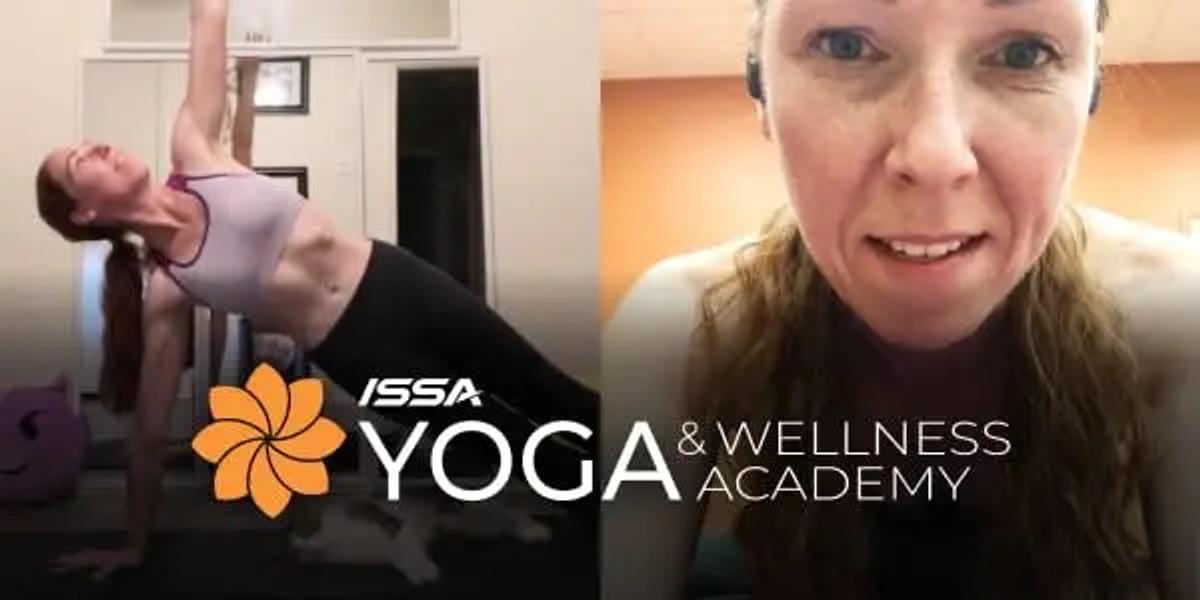

Yoga | Transformation through Yoga: A Journey of Healing and Empowerment
Reading Time: 4 minutes 40 seconds
DATE: 2023-10-18
Yoga has the power to transform lives, heal wounds, and empower individuals to reach their full potential. Leahna Ennis, a certified yoga instructor, has experienced this transformation firsthand. Recently, Leahna shared her inspiring journey through yoga, from her early exposure to the practice to becoming a certified instructor through the ISSA Yoga & Wellness Academy . Her story of how she went from a small-town Texas yoga enthusiast to becoming a certified yoga instructor is nothing short of inspirational.
Early Influences of Yoga
Leahna's journey into the world of yoga began with her mother's influence. From a young age, she watched her mother practice yoga, and the beauty and simplicity of the poses piqued her interest. She vividly recalls the moment when she was just a child, trying out yoga poses alongside her mom, and the lion pose left a lasting impression. While life took her on different paths, including college and a full-time career as a Director of Human Resources, yoga remained a constant presence in the background.
However, it was a life-altering car accident in 2004 that brought yoga back into Leahna's life in a most profound way. The accident left her with serious injuries, including a broken tailbone, collarbone, and a severely damaged right foot. The multiple surgeries and physical pain were only part of the struggle; the accident also took a toll on her mental health. Depression and fear crept in as she grappled with uncertainty and doubts about her recovery.
FREE eBook! Learn How to Properly Train and Build Perfect Glutes!
Yoga as a sanctuary: healing and renewed focus.
It was during this challenging period that Leahna turned to yoga once again. Yoga became her sanctuary, her beacon of hope, offering both physical and mental healing. Through the practice, she found a way to focus her mind and regain control of her life. Slowly but surely, yoga became her anchor, providing concentration, focus, and a renewed sense of self.
Later in her life, yoga would again serve as a way out of a difficult season. As she emerged from the darkness of a mentally abusive relationship, yoga was the inspiration guiding her way out. Committing to her yoga practice, Leahna was empowered to recognize her value, paving the way for brighter days.
The Decision to Become a Certified Yoga Instructor
Leahna's journey with yoga took another pivotal turn when she decided to become a certified yoga instructor . It was a decision that didn't come lightly, but it was rooted in a desire to deepen her connection with yoga and share its transformative power with others. While taking a yoga class at her local gym, Leahna thought to herself, “Why am I not teaching this class?” That ‘aha' moment was the crystallization of many previous conversations she had with friends and family about the amazing physical and mental health benefits of yoga. Following that class, Leahna began her research of yoga certifications and immediately fell in love with what she learned about the ISSA Yoga & Wellness Academy. She was drawn to the robust nature of the yoga certification program and how many other courses, outside of yoga, were offered by ISSA. Intrigued by the comprehensive curriculum and supportive approach , Leahna enrolled immediately.
The Journey to Yoga 200 Certification
April 2023 kicked off the beginning of Leahna’s commitment to becoming a certified yoga instructor. While pursuing her yoga certification, she was also working a full-time job, finishing up her Master’s Degree in Employment Law and planning her wedding. With an already full schedule, there were some weeks when Leahna would invest four hours in the course and other weeks when her schedule didn’t allow her to access the program at all. She estimates that on average she committed to one hour per week within the course. In August 2023, Leahna earned her Yoga 200 certification .
Becoming a certified yoga instructor is no easy feat, especially for someone with a full-time job and other responsibilities. She emphasizes the importance of surrender and self-reflection, both integral aspects of yoga that she also encountered during her certification journey.
Leahna highlights the moments during her certification that she found most fulfilling—the sequencing and the practical aspects of teaching. Sequencing allowed her to explore her creative side and design yoga flows that resonate with her personal style. However, she admits that the historical aspects of yoga were more challenging for her. Nevertheless, she recognized the value of understanding the history and philosophy behind yoga, which contributes to her authenticity as an instructor.
Within the ISSA Yoga & Wellness Academy program, Leahna appreciated the fact that not only could she go at her own pace, but that she would start/stop in the middle of a lesson and pick up where she left off. She admits to watching a few sections more than once, not because she didn’t grasp the concepts but rather because they were so informative, she wanted to ensure she didn’t miss anything.
Yoga as a Practice of Surrender and Self-Reflection
Throughout her certification journey, Leahna admitted to learning valuable lessons about surrender and self-reflection, both on and off the mat. She embraces the idea that yoga is a practice of self-discovery and acceptance, where it’s okay to have good and not-so-good days. This philosophy translates into her life off the mat, allowing her to find peace in her imperfections.
While Leahna has started teaching yoga to friends and family, she acknowledges that building confidence in her teaching abilities takes time. She's taking a measured approach, ensuring that she can effectively guide others in their practice. Her supportive network of loved ones has been instrumental in her journey. The feedback she is receiving from her network of friends and family is not only helping Leahna improve her instruction, it’s impacting her confidence. Before her certification, she would help her friends with stretch pre and post workout at the gym. Now she can explain the “why” behind the need for each stretch.
Making Yoga Accessible for All
As Leahna continues to deepen her practice and build confidence in her teaching skills, she envisions a future where she can share the transformative power of yoga with a broader audience. Her mission is to break down barriers and make yoga accessible to everyone, regardless of their preconceived notions about the practice. Leahna aims to inspire others to embark on their yoga journey and experience the healing and empowerment it can provide.
Leahna Ennis' journey through yoga exemplifies the remarkable potential for personal growth, healing, and empowerment that this ancient practice offers. From her early exposure to yoga alongside her mother to overcoming life's challenges through its healing power, Leahna's story is a testament to the transformative effects of yoga. Her decision to become a certified yoga instructor through the ISSA Yoga & Wellness Academy reflects her commitment to sharing the benefits of yoga with others. As Leahna continues to evolve as an instructor and healer, she seeks to break down barriers and make yoga accessible to all, embodying the true essence of yoga's transformative potential.
Become a Registered Yoga Teacher
Inspired by Leahna want to learn more? Check out the ISSA Yoga & Wellness Academy’s Yoga 200 course. It’s a Yoga Alliance approved 200-hour online yoga teacher training course developed by industry-leading yoga experts. Upon completion, you can register with the Yoga Alliance as a 200-hour Registered Yoga Teacher (RYS 200).
Thinking about becoming a yoga teacher? Interested in learning more?
Preview the first chapter free.
Tell us a little about yourself, and we’ll reach out with more details about our Yoga Teacher training program.
No cost. No obligation.

Yoga and the 5 Koshas: An Inward Journey of Awareness
The ancient yogis have drawn a map to explore the deepest levels of our being and to facilitate the inward journey of yoga. This map describes five different layers or veils of consciousness within us. Each layer has its own characteristics and functions and thus requires different methods to experience and uncover. By cultivating awareness of these subtle layers, we gain insight into ourselves by developing a greater awareness of our inner world. Understanding how the practices of yoga bring the three shariras and the five koshas—body, breath, mind, wisdom, and spirit—into harmony, not only promotes overall health and wellness but also brings you closer to the ultimate aim of yoga, self-realization and enlightenment.
What are the koshas?
Kosha is a Sanskrit word translated as layer or sheath. It is used in yoga philosophy to describe the different layers of our being. These layers are called sheaths or veils because they cover each other, one on top of each other. Koshas are often compared to the image of a Russian nesting doll or the concentric layers of an onion. The physical body is the outermost layer and coarsest sheath of the koshas. The deeper layers include the emotional, mental, and causal bodies. At the deepest layer of one’s consciousness is the bliss sheath, which is said to contain our true nature, pure consciousness itself.
The koshas function is to protect, contain and support the atman, the individual soul. They help create a healthy balance among the various aspects of our personality and provide an opportunity to develop compassion and empathy. When we can clearly see, harmonize and align the layers of the koshas, we then attain the unitive state of yoga, an experience of oneness with the universe.
What are the shariras?
Sharira is a Sanskrit word translated as “body” and relates to the three layers of our awareness. The three shariras are similar to the koshas but are a more simplified system that may be easier to understand. The three bodies are made up of the five koshas, with the second sharira grouping three of the koshas together. The three layers or bodies are:
- Sthula Sarira. The outer layer is the physical body that eats, breathes and moves by the will of our ego or ahamkara . The physical body includes our external and internal organs of sense and action which connect our Jiva or soul to the external world.
- Sukshma Sarira. The second layer is the subtle body that contains the four functions of the mind and prana, the life force energy that flows throughout the body. It includes the five organs of sense, the organs of action (genitals, anus, hands, legs and speech), the five vital breaths, as well as wisdom and intellect.
- Karana Sarira. The innermost layer is the causal body. It is the seed of the subtle body and the gross body. This body is described as a state of deep sleep, where the buddhi aspect of the mind is dormant. It is also the seat of karma, the accumulated actions from past lives that determine our current state of existence. Past karmas become stored in samskaras , which are unconscious habit patterns. This body holds the keys for us to grow into our highest spiritual awareness.
Origins of the koshas
The concept of having five layers within our body appeared in the earliest yogic texts, in the second chapter of the Taittiriya Upanishad . This ancient yoga text is thought to have been written during the sixth century B.C. It provides teachings on attaining self-realization—a state where there is no separation between self and the oneness of the entire universe. This is also known as layered Maya theory. Maya translates as “illusion.” This theory states that our deepest knowledge, wisdom and spiritual understanding is hidden in layers with us.
Fifteen hundred years after the Taittiriya Upanishad, Advaita Vedanta refined these five selves into the koshas, the five sheaths or coverings that veil the light of our true self or atman. The koshas are imagined as opaque layers that form a barrier from realizing our true nature of bliss and oneness with the universe. Yoga created the tools to peel back these layers to bring our awareness deeper and deeper into our bodies, eventually reaching the innermost core, the atman.
The 5 koshas
Annamaya kosha.
The outermost layer is our gross physical body, the Annamaya kosha. Anna means “food,” as this sheath feeds our awareness into the other layers and provides the ability to sustain the other four koshas. Our bodies need to be nourished every day to survive, grow and develop. We can support this physical layer by exercising regularly, sleeping well and eating healthy foods.
The next three layers of the self are considered to be part of the subtle body or suksma-sarira.
Pranamaya Kosha
The next layer within the physical sheath is the energy body, the Pranamaya kosha. Prana means “vital energy” or “life force energy” as this energetic layer contains and regulates the movement of the physical and mental energies through the energy channels (nadis) and energy centers ( chakras ).
We can support this subtle layer through incorporating breath work, chakra activation, and mudras in our asana practice. Pranayamas, ancient yogic breathing exercises , are the most potent practices for unblocking stagnant energy and to strengthen and activate prana.
Manomaya Kosha
The next layer in is the mental body, the Manamaya kosha. Mana means ”mind” as this sheath contains our mental thoughts and emotional feelings. This kosha governs our mental activity, perceptions, beliefs, and habit patterns. We can support this mental and emotional layer with regular meditation practice and mindfulness techniques. Meditation helps you understand what is going on inside of you and how to better control your mind and emotions.
Vijnanamaya Kosha
The last layer of the subtle body is the wisdom body, the Vijnanamaya kosha. Vijnana means “knowledge” as this sheath contains intuition, wisdom, and witness consciousness. In this kosha we are detached from thoughts, ego, and sense of self. We can support the wisdom sheath through deep meditation, the practice of detachment, and the techniques of Jnana yoga .
Anadamaya Kosha
The last kosha that directly covers the True Self is the bliss body, the Anandamaya kosha. Ananda means “bliss” as this sheath contains the pure unchanging happiness, joy, love, peace and ecstasy that is found here at the deepest and innermost layer of our being. These are not merely feelings, but a state of being that has always existed yet has been buried by the other koshas. Behind this thin subtle layer resides the pure consciousness of our True Self.
The bliss body is the place of eternal happiness. When you are connected to this body, you feel lightness, ease, contentment, and finally, a great unending Joy. We can connect to this layer through the practice of bhakti yoga .
Exploring the five koshas
The koshas serve both as a guide for the deeper practices of yoga and as a map for our spiritual journey. The path of yoga is one of progressively moving inward, through each of the koshas, to experience the radiance of the True Self. At the same time, yoga allows this inner radiance to shine through our individuality.
In the beginning of yoga practice , the primary focus is on Annamaya Kosha, the alignment and physical sensations of the physical body. Once we have connected, aligned and harmonized this kosha, we can then begin to use the breath as a bridge into the Pranamaya kosha, connecting with the energy manifesting in the body. Focusing on the body, breath and the energy absorbs the mind and the thoughts diminish, allowing the Manamaya kosha to calmed, balanced and harmonized. Now we can explore the Vijnanamaya kosha to access our intuition and inner wisdom. Finally, we move through the first four layers and taste the bliss, ecstasy and joy of the Anandamaya kosha. True enlightenment happens when all the koshas become refined and aligned to experience absorption in the oneness of our True Self.
Benefits of exploring the koshas
When we understand the five koshas of the human body, we begin to see how each layer affects us individually and collectively. We become aware of the layers of our own being and how they interact with others. By consciously exploring the koshas, we also strengthen our ability to recognize them in other people and situations. Exploring the koshas helps us:
- Become more mindful and aware of our thoughts, feelings, and actions
- Learn about the relationship between our physical, emotional, mental, and spiritual selves
- Create a clearer path and purpose for our spiritual journey
- Experience the power of transformation and self-inquiry
- Softens and dissolves the ego-mind’s selfishness, greed, anger, and jealousy.
- Strengthens mental focus and concentration
- Have a clear sense of center to better navigate your inner self.
- Gain an understanding of the true nature of reality
- Feel empowered and connected to the universe
- Move toward experiencing powerful states of Self-realization and enlightenment
Integrating the koshas
All five layers of self are interdependent and connected. The practices of Yoga help bring all the koshas and the shariras into harmony. When we peal away the outermost layer, we become aware of the next layer beneath it. As we peel away the layers, we discover the truth of who we really are. As these deep truths arise, we must integrate them into our sense of self. This integration requires patience, humility, trust, and surrender. It takes time to cultivate the wisdom to know when to move deeper and when to stop and integrate.

Finding the Best Time to Meditate: Tips and Advice on When to Sit

Purusharthas: The Four Goals of Life

Trimurti: The Hindu Trinity of Brahma Vishnu Shiva

Brahman: Definition, Meaning, and Philosophy

Yoga Nidra: Meaning, Benefits, Videos and Tips

17 Rules for Living Like a Yogi

The Best 16 Heart Opening Yoga Poses

18 Clear Signs of Negative Energy in a Person
Remove Ads with a
Premium Membership
Explore More
Yoga tips advice articles practices basics techniques.

The Best Yoga Vitamins for Optimum Flexibility

Snack Attack: What to Eat Before Yoga

Yoga and Astrology: Find the Best Practices for Your Sign

11 Benefits of Meditation Before Bed

7 Tips For Minding Your Yoga Manners

3 Paths for Expanding Your Yoga Practice

Yoga for Runners: Top Tips and Best Benefits

The Importance of a Daily Yoga Practice

Hip Openers: Tips, Benefits, Anatomy & Poses
3 responses to “yoga and the 5 koshas: an inward journey of awareness”.
the whole is not lessor than the brahman. the brahman is not greater than the brahman. the brahman is in the whole. the braham is like the brahman. the whole is like the brahman. the whole is not lessor than brahman in being? oneness is where atman and braham are yoga!
a message is to what is compassion as where are you at is yoga is learned?
short with depth and clarity. outstanding.
Leave a Reply Cancel reply
Your email address will not be published. Required fields are marked *
Save my name, email, and website in this browser for the next time I comment.
- Recommendations

My Yoga Journey: Past, Present, Future
One of the main reasons I started this blog was to share my yoga journey. This post is dedicated to just that, my journey with yoga; the past, present, and future. There are not yoga tips and tricks in this post. It’s simply a deeper look at how yoga has played a part in my life.

My Yoga Journey: The Past
I took my first yoga class when I was in early elementary school. Somehow I found out about a community education yoga class that was being held at the senior living center near my house. I really wanted to go, so my mom signed me up. For several weeks, my mom would drop me off for the hour class.
Most of the students in the class were older than my grandparents. I honestly don’t remember it bothering me that I was 70+ years younger than everyone else in the class.
Although I had really enjoyed the classes, after the session was done I didn’t take another class for about 10 years.
In college, I would take the occasional class, but it wasn’t until my late twenties that I started having a very regular yoga practice. I eventually worked my way up to practicing yoga every day.
My Yoga Journey: The Present
Journeys of Yoga was started in April of 2016. In the beginning, I wrote some yoga articles and published monthly updates on how my practice was going. I did these updates to hold myself accountable for my practice and because I thought others might enjoy hearing about my practice.
After a year of doing these monthly updates, I decided to stop making them. I started feeling like they didn’t align with my yoga philosophy. I no longer needed to be held accountable for my practice, I enjoy doing yoga so much that accountability isn’t an issue. Another reason I stopped the monthly check ins is that every person is unique. I don’t want to give the impression that I think other people should have a yoga practice that looks like mine. Yoga is a personal practice and I just started feeling weird documenting and sharing out every month.
In 2016 I also started taking regular classes from Gena. Her strength, flexibility, and love of yoga were really inspirational to me. I started to grow as a yogi and decided to go through yoga teacher training. When I first decided to go through the training I was only doing it to improve my own practice, not to teach.
Starting to Teach Yoga
However, before my training even started my ideas of teaching yoga started to change. I began asking Gena about teaching. She had been wanting to pass a couple of Vinyasa classes off to another teacher and asked me if I would like to take them. I couldn’t let the opportunity pass me up, so I took the job.
I was pretty nervous about starting to teach without any formal training. However, I felt comfortable in my own yoga practice and have experience teaching (I teach second grade as my day job).
Teaching yoga while I went through my yoga teacher training ended up working really well. After my training weekends, I was able to apply the things that I had learned right away with my yoga students.My students were very appreciative of the knowledge that I would bring back to them.
My eight-month training at Devenadi was amazing. I wrote a whole post about my experience going through the training.
Once I started teaching yoga and going through my training I became a lot better at having a home practicing. I got comfortable with doing yoga on my own without a video or teacher guiding me.
What started to suffer though was going to yoga classes. Until recently I had gone months without attending a yoga class. This has been a huge mistake on my part. I really started to miss the community and growth I felt from attending classes.
My Yoga Journey: The Future
In the immediate future, I would like to be better at going to classes again. Each week I am now going to one or two classes and would like to continue that and maybe even increase it. There is so much value from having a teacher to help me grow in my own practice.
I have also signed up for a Restorative Yoga training. I find that I am really drawn to Restorative Yoga. As a teacher and student of yoga, I think it’s important for me to keep learning as much as I can by taking classes and trainings.
Very recently, I started making YouTube videos and plan on making many more videos in the future. I also love blogging and will definitely continue making content on Journeys of Yoga.
Down the road, I plan on taking more trainings. Yin Yoga, Prenatal Yoga, and Somatic Yoga are the next trainings that I would like to do. Eventually, I will go through a 300-hour training to become a 500 RYT teacher.
Going on retreats and workshops, as well as teaching retreats and workshops is also something that I am very interested. Basically, the more yoga I can do, the better!
My yoga goal is to find balance in being a yoga teacher, having my own practice, and continuing to learn through classes and trainings. I really don’t want any of these to suffer and I know it will require me to be intentional and dedicated.
Thank you so much for reading about my journey. It’s nothing dramatic, but it’s what brought me to where I am today. Each person has their own journey with the thing that they are passionate about. I am so grateful that you have taken the time to learn about my journey.

RELATED ARTICLES MORE FROM AUTHOR

9 Affordable Yoga and Mindfulness Retreats in 2018
Privacy overview.
Necessary cookies are absolutely essential for the website to function properly. This category only includes cookies that ensures basic functionalities and security features of the website. These cookies do not store any personal information.
Any cookies that may not be particularly necessary for the website to function and is used specifically to collect user personal data via analytics, ads, other embedded contents are termed as non-necessary cookies. It is mandatory to procure user consent prior to running these cookies on your website.

Morning Carpool
Tips For Starting a Yoga Journey (For Absolute Beginners)
Posted: March 24, 2024 | Last updated: March 24, 2024
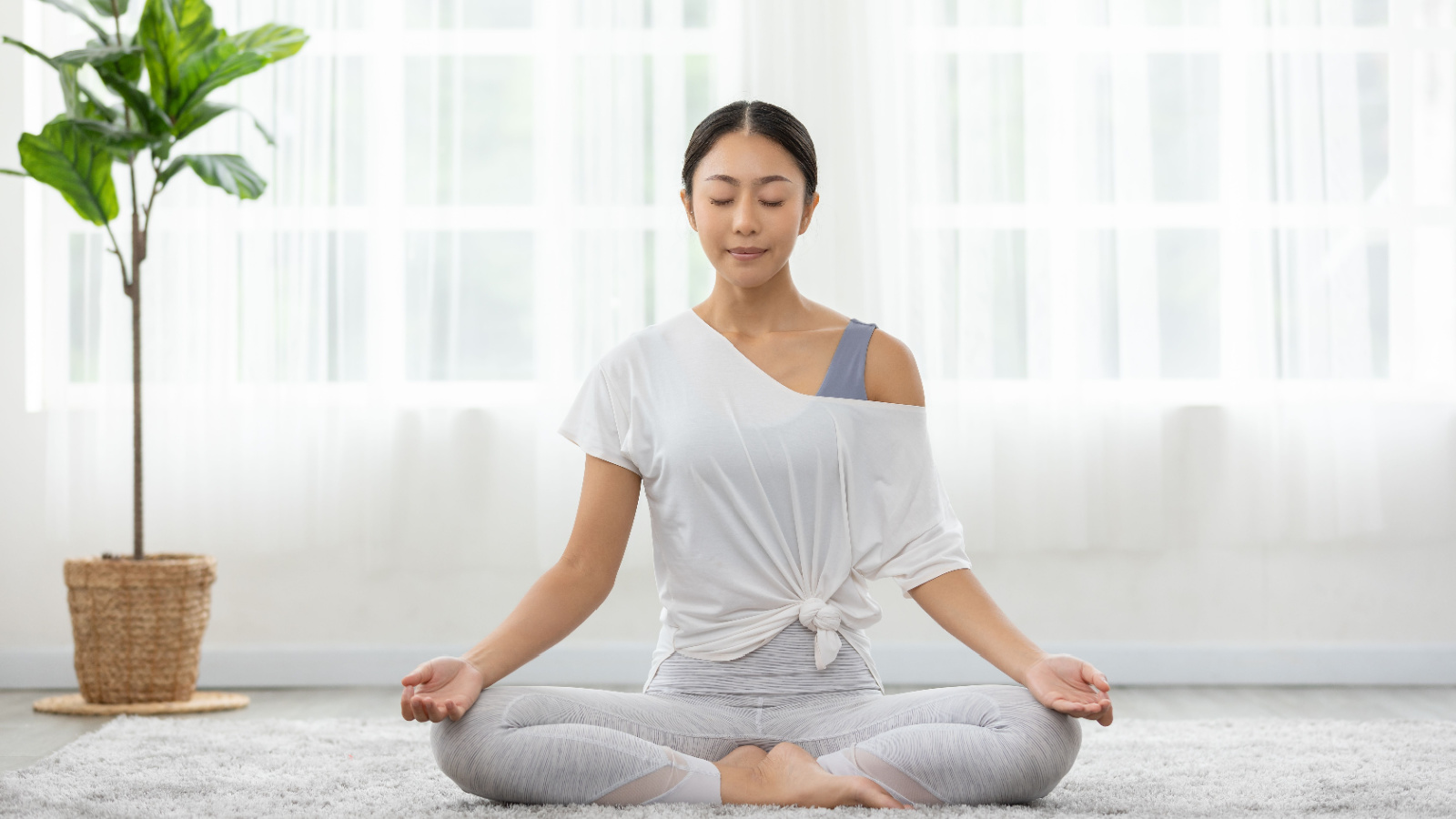
Make the most of your personalized yoga journey by learning the basic techniques to achieving harmony in body and mind. You will be richly rewarded if you put in the time and effort.
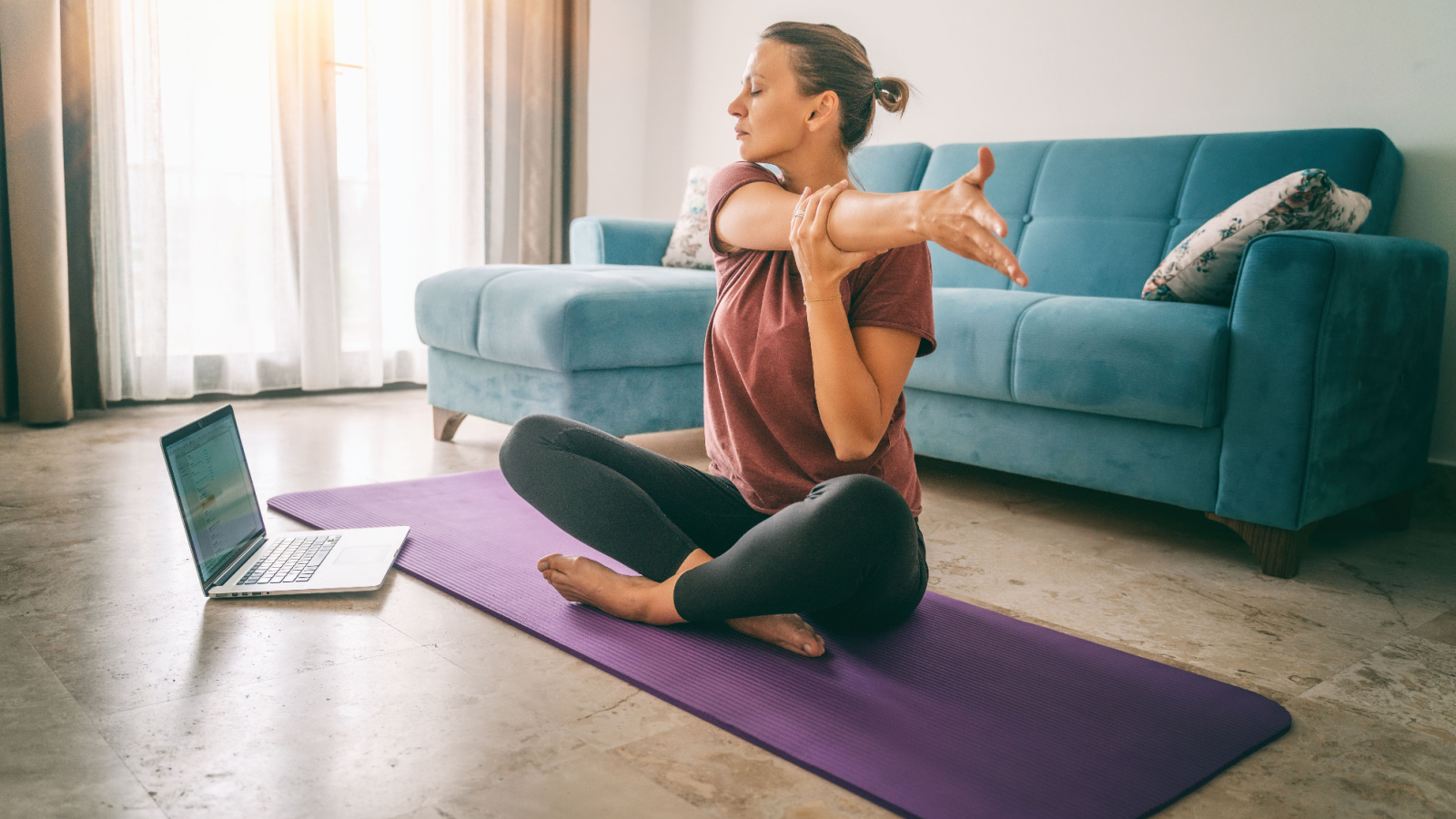
Discover Your Space
Find a quiet, comfortable spot to stretch out and move freely. This space should be your sanctuary, where you can leave the world behind and focus on your practice. Ensure it’s well-ventilated and has enough room for your yoga mat and other props. This is the first step in creating a personal yoga journey that feels both intimate and expansive.

Choose the Right Gear
Investing in a good yoga mat is the foundation of your practice. Look for one with sufficient grip and cushioning to support your body through various poses. Comfortable clothing that allows for a full range of motion is also essential. Remember, the right gear can significantly enhance your yoga experience, making it more enjoyable and effective.
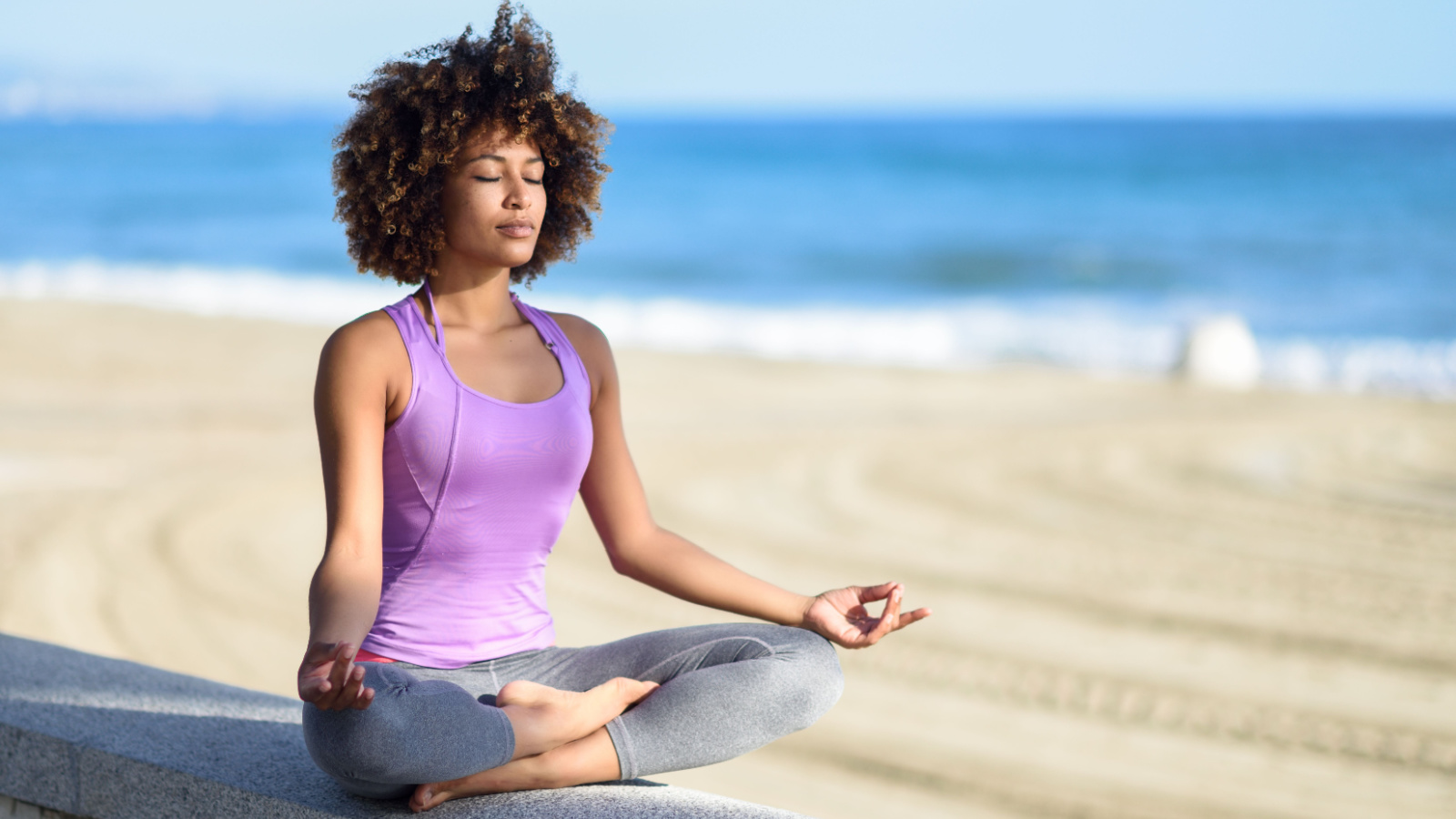
Start with Breathing Exercises
Begin each session by focusing on your breath. Deep, mindful breathing helps to center your mind and prepare your body for the physical practice. Try different breathing techniques to find what works best for you, and notice how it brings clarity and calmness. This simple step can transform your practice, making each movement more intentional and powerful.
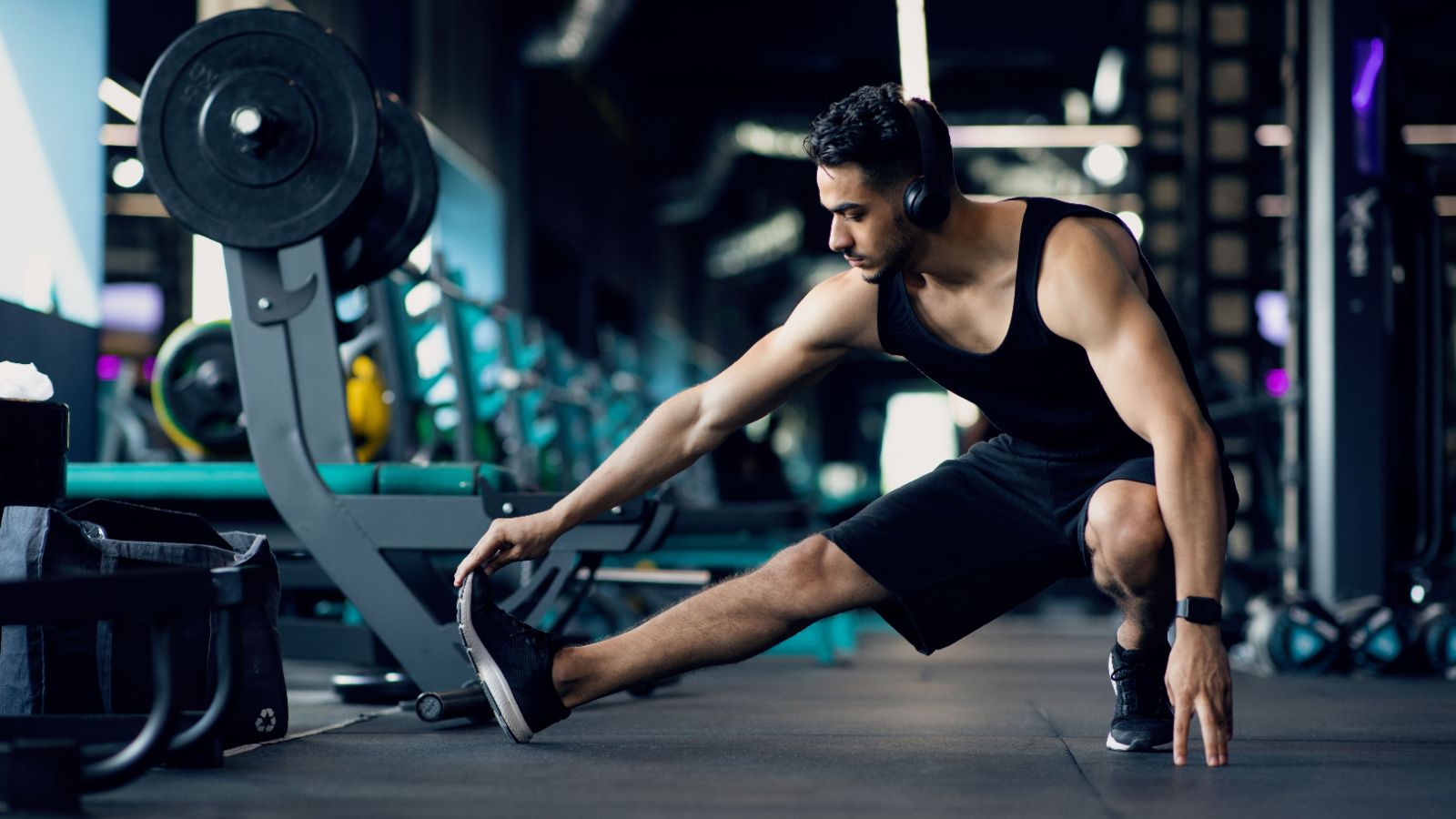
Warm-Up with Gentle Stretches
Warming up your muscles is crucial to prevent injury and prepare your body for more intense poses. Start with simple stretches that target major muscle groups. Pay attention to how each stretch feels, and don’t rush the process. Warming up is an opportunity to connect with your body and set the tone for your practice.

Learn the Basic Poses
Familiarize yourself with foundational yoga poses, such as mountain pose, downward dog, and child’s pose. These basic poses are the building blocks of any yoga practice. Focus on mastering the form and alignment of each pose, listening to your body, and making adjustments as needed. With time, these poses will become second nature, forming the core of your yoga repertoire.
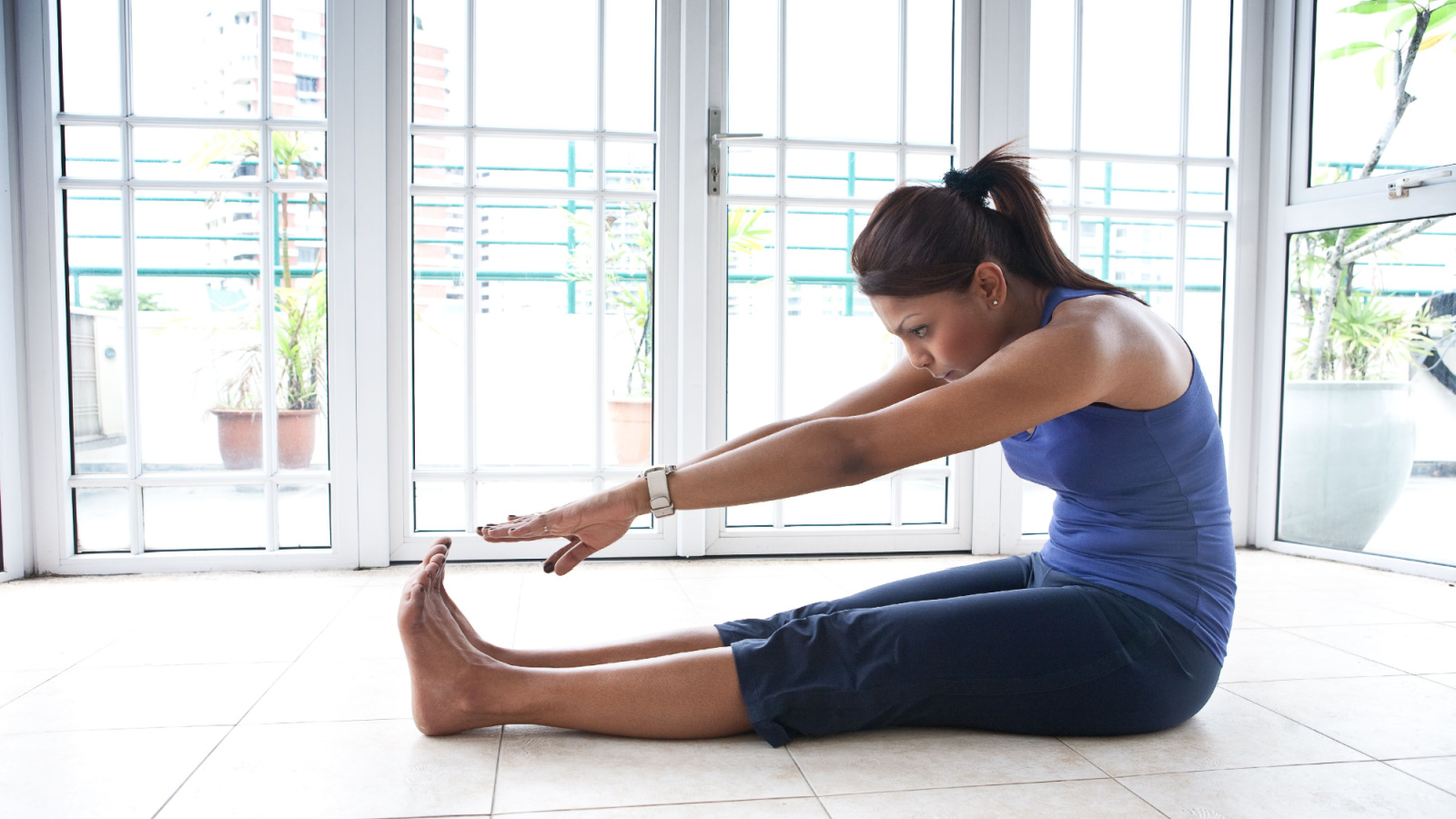
Focus on Alignment
Proper alignment is key to getting the most out of each pose and avoiding injury. Take the time to learn the correct positioning for your hands, feet, hips, and spine. Use mirrors, if available, to check your form, or consider recording yourself to review your alignment. Remember, in yoga, how you move into and hold a pose is just as important as the pose itself.

Embrace Props
Don’t be afraid to use props like blocks, straps, and bolsters. They can help you achieve the correct alignment, deepen your stretches, and make challenging poses more accessible. Props can also be used creatively to explore new variations of familiar poses. See them as tools that enhance your practice, not as crutches.
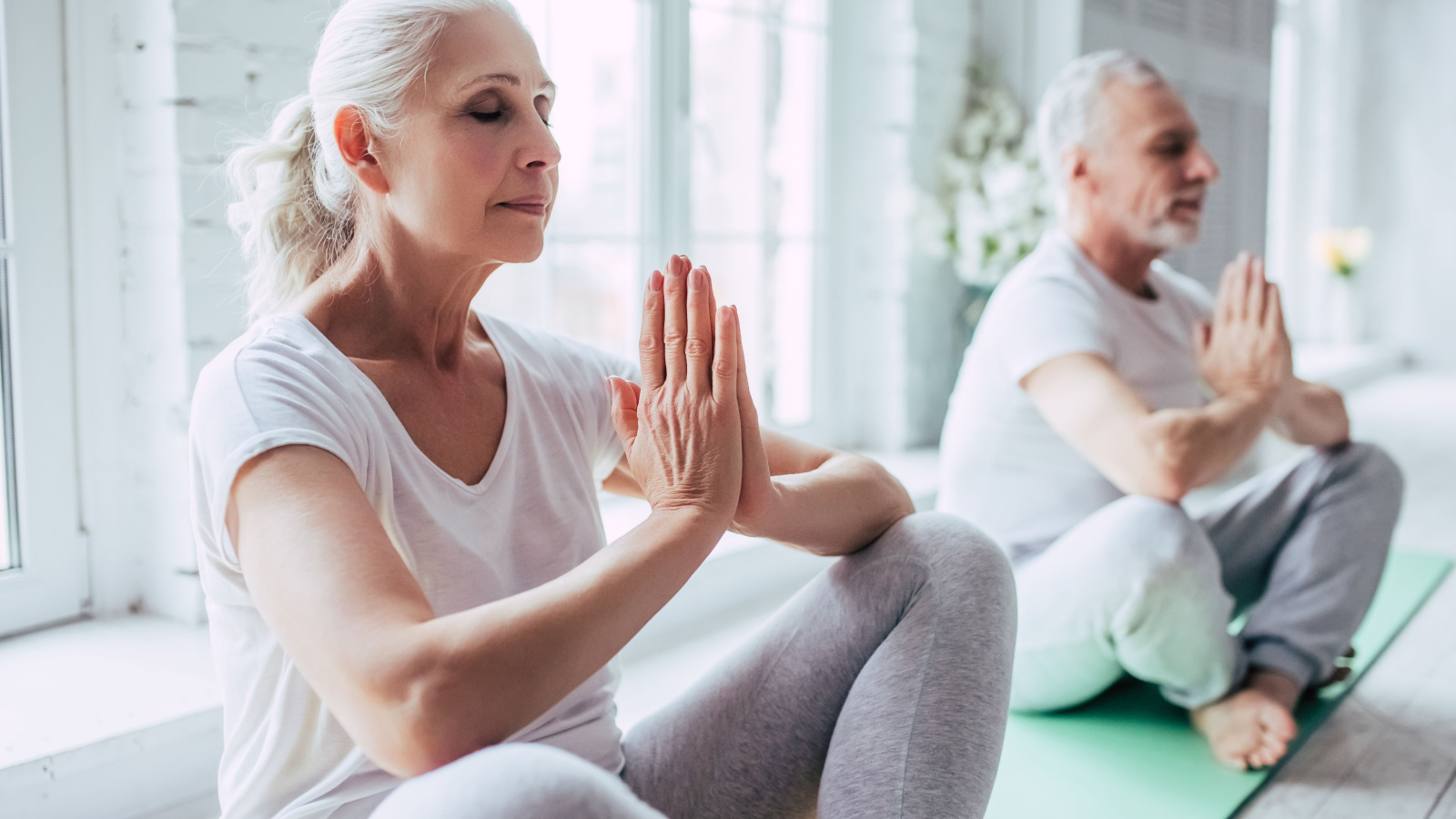
Practice Mindfulness
Yoga is as much about the mind as it is about the body. Try to stay present and mindful throughout your practice. Observe your thoughts and emotions without judgment, and bring your focus back to your breath whenever your mind wanders. This mindfulness will deepen your practice and bring peace and clarity.
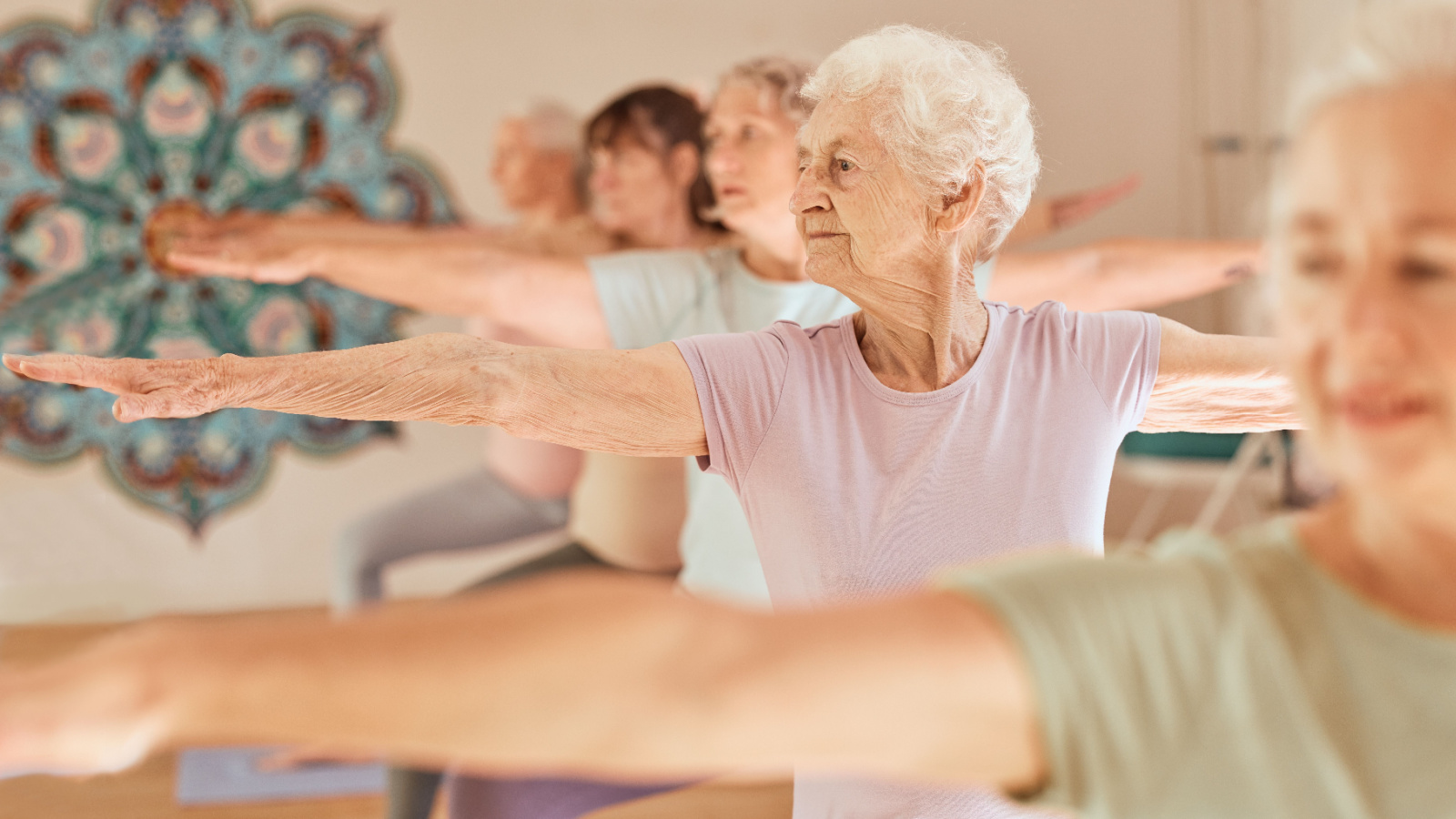
Take It Slow
Progress in yoga doesn’t come from rushing through poses or pushing your body too hard. Take your time to fully experience each pose, making small adjustments to deepen the stretch or improve your balance. Remember, yoga is a personal journey, not a race. Respecting your body’s limits is key to a sustainable practice.
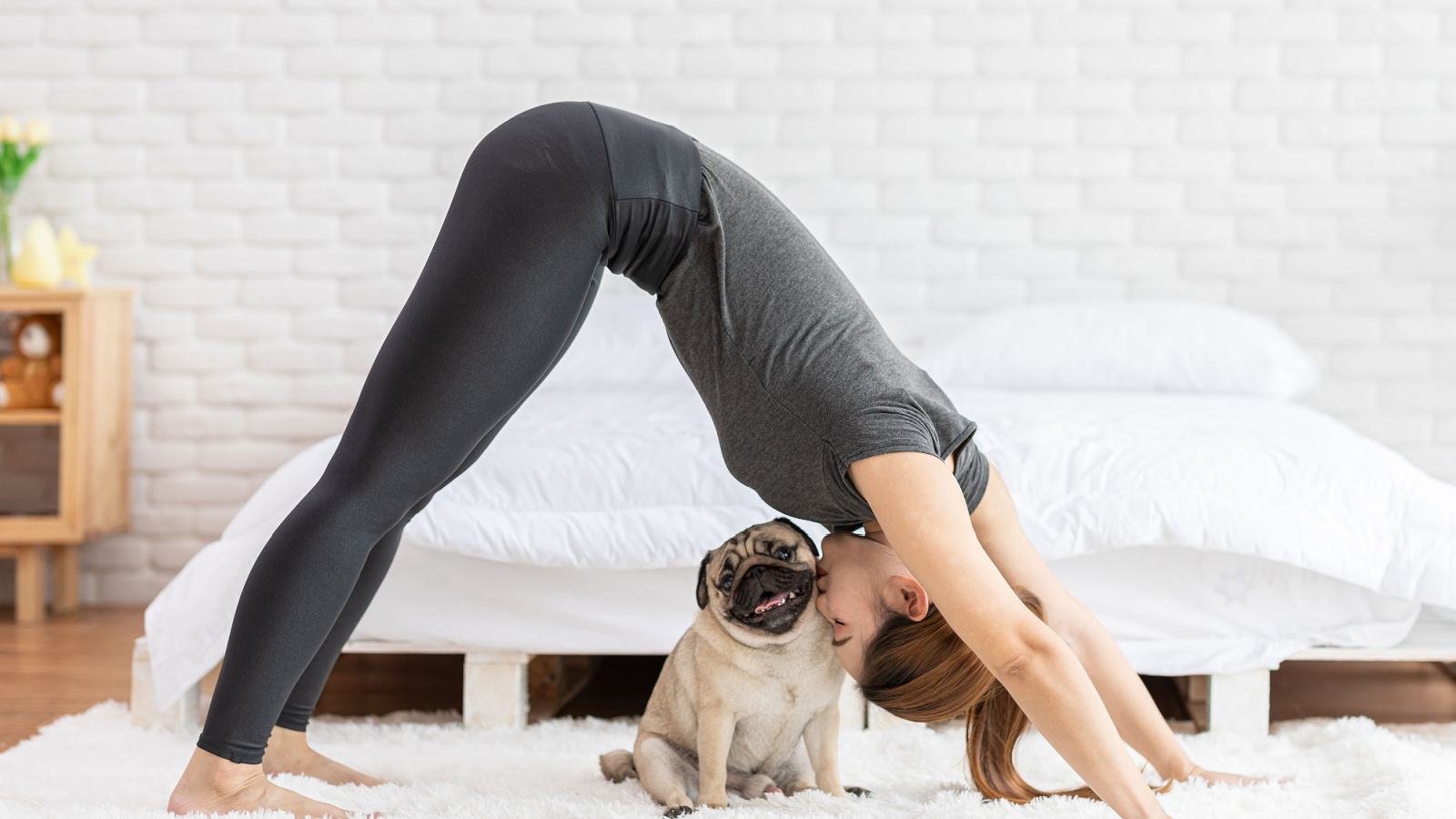
Build Strength Gradually
Strength-building poses like plank, warrior, and chair are important but should be approached with care. Start with shorter holds and fewer repetitions, gradually increasing the intensity as your strength improves. Focus on engaging the correct muscle groups and maintaining proper form to build strength safely and effectively.
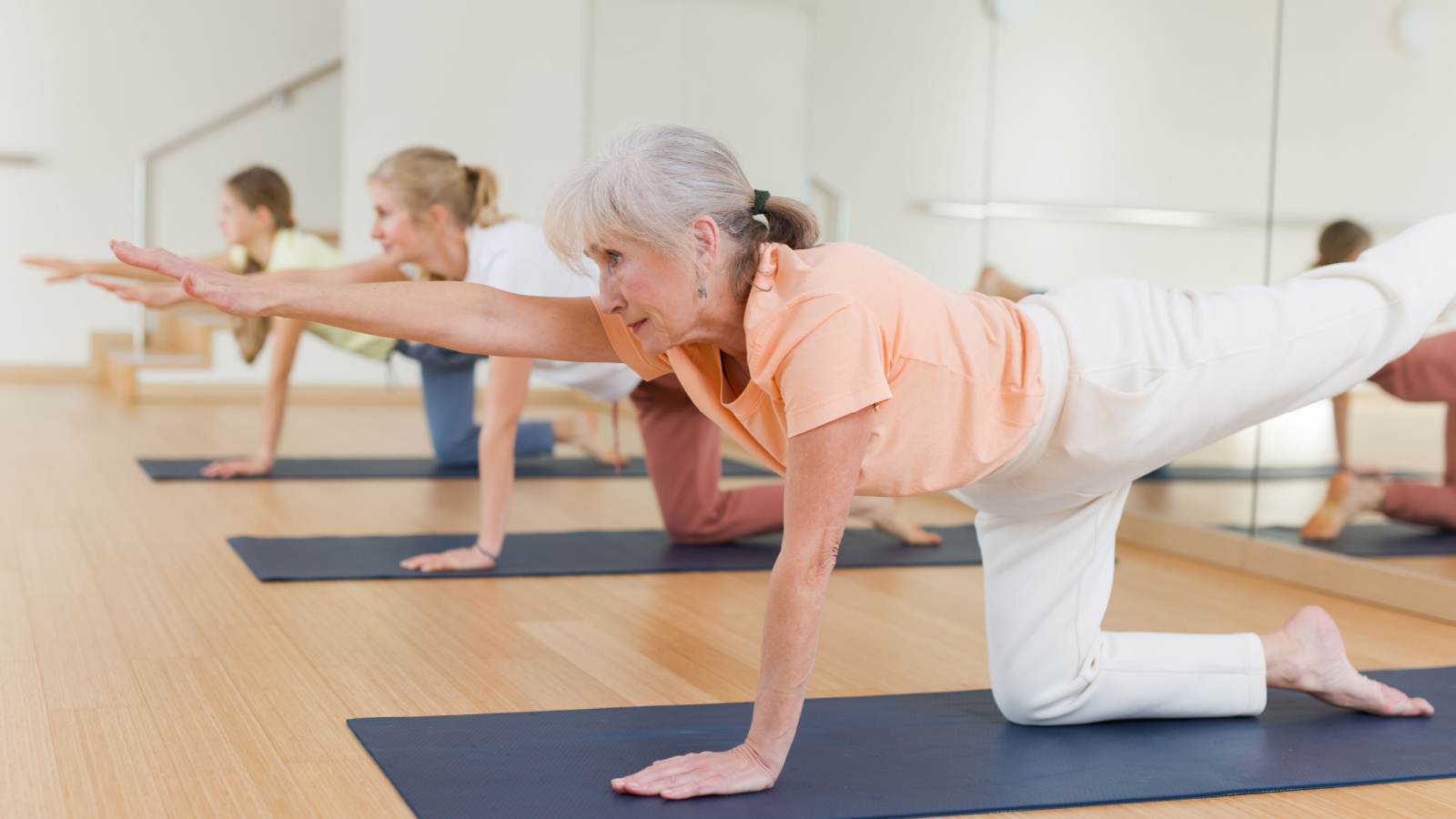
Explore Balance Poses
Balancing poses, such as tree pose and half moon, can be challenging but incredibly rewarding. They require focus, strength, and a calm mind. Start near a wall or chair for support, and don’t be discouraged by wobbles or falls. Over time, you’ll find your balance and confidence improving.
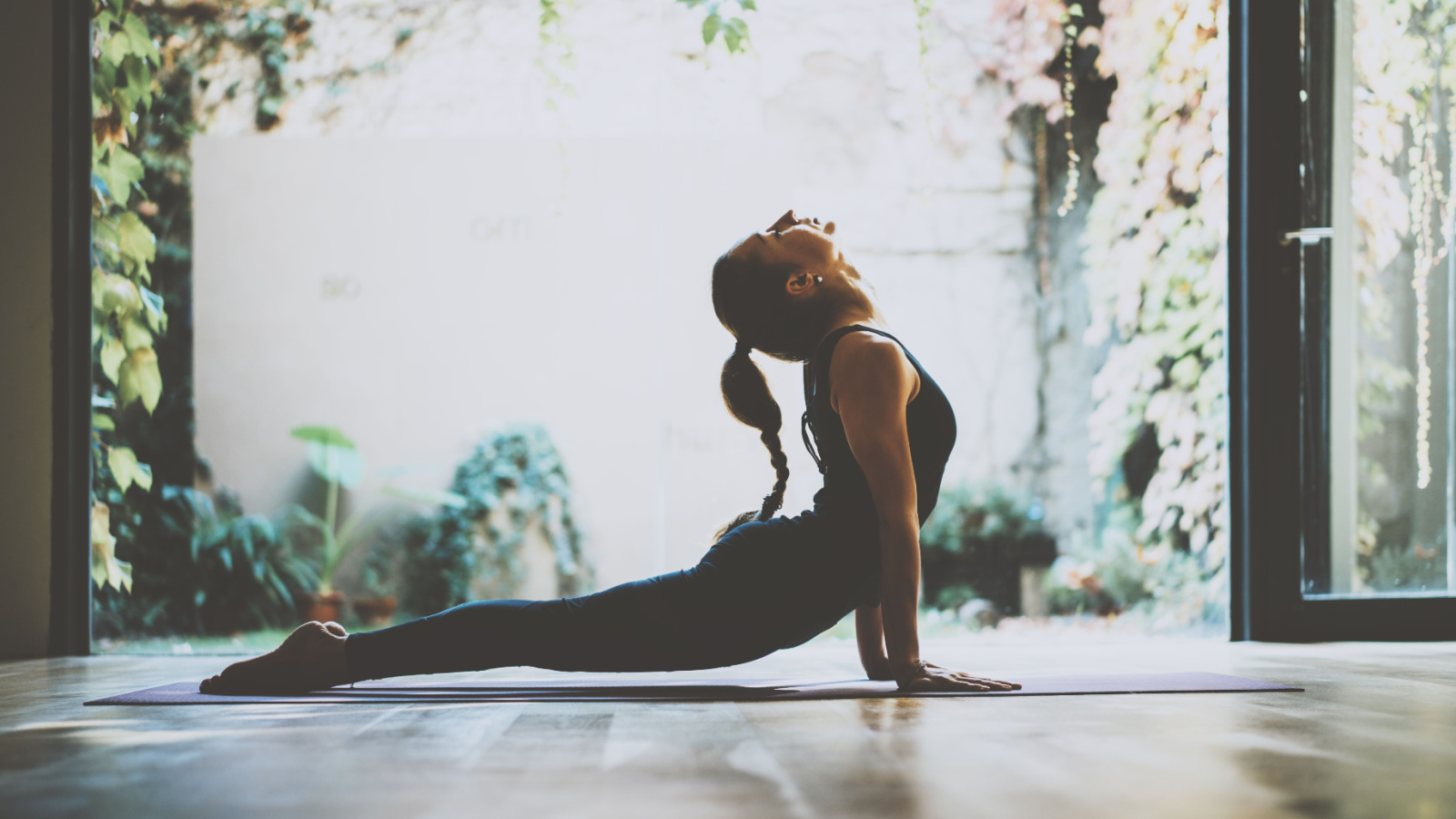
Incorporate Flow Sequences
Flow sequences, like sun salutations, add dynamic movement to your practice. They help build heat in the body, improve flexibility, and enhance cardiovascular health. Start slowly, focusing on the transition between poses, and gradually increase your pace as you become more comfortable. Flow sequences can be both meditative and invigorating, adding a new dimension to your practice.
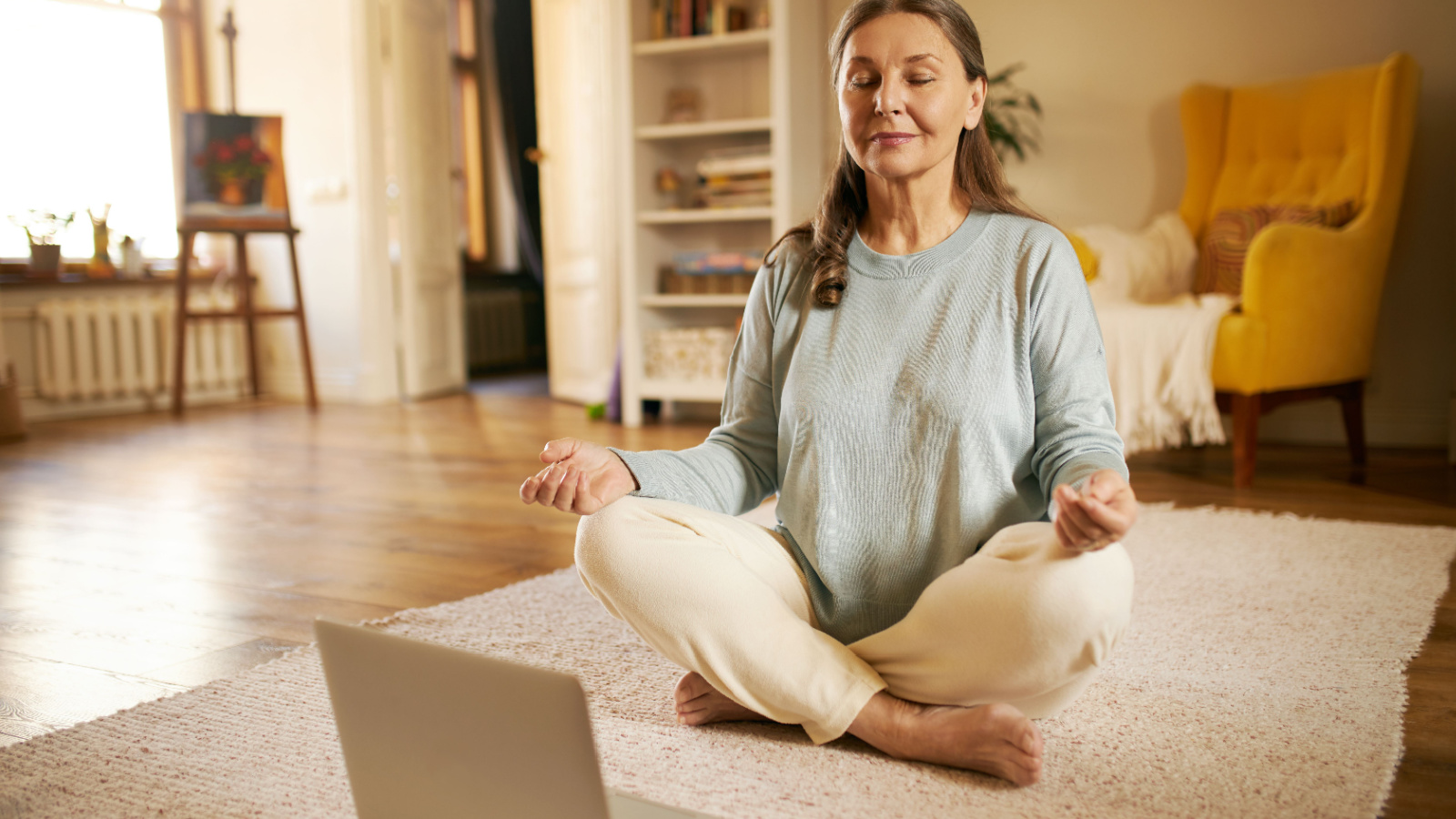
Cool Down Properly
Ending your session with a proper cool-down is as important as the warm-up. Gentle stretches and restorative poses allow your body to relax and recover. Savasana, or corpse pose, is a traditional way to end a yoga practice, providing deep relaxation for both body and mind. Take this time to reflect on your practice and your progress.

Stay Hydrated
Keeping your body hydrated is essential, especially as you engage in more physical activity. Drink water before, during, and after your practice to help your muscles recover and replenish any fluids lost through sweat. Listen to your body’s signals, and don’t underestimate the importance of hydration for your overall well-being.
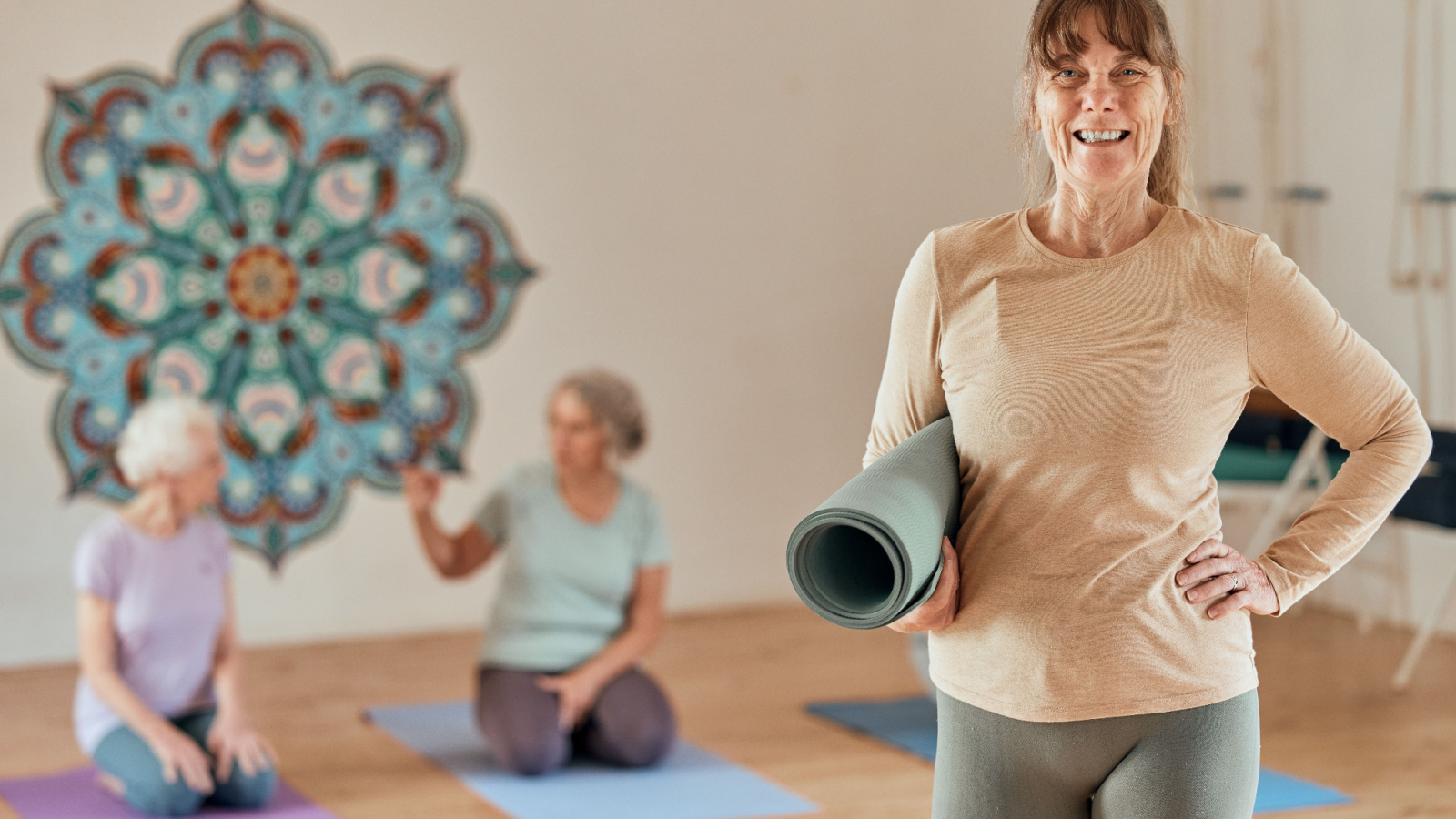
Set Realistic Goals
Setting goals can be motivating, but keeping them achievable is important. Whether it’s mastering a specific pose, increasing your flexibility, or simply committing to a regular practice, make sure your goals are realistic and tailored to your personal journey. Celebrate each achievement, no matter how small, and use setbacks as opportunities to learn and grow.
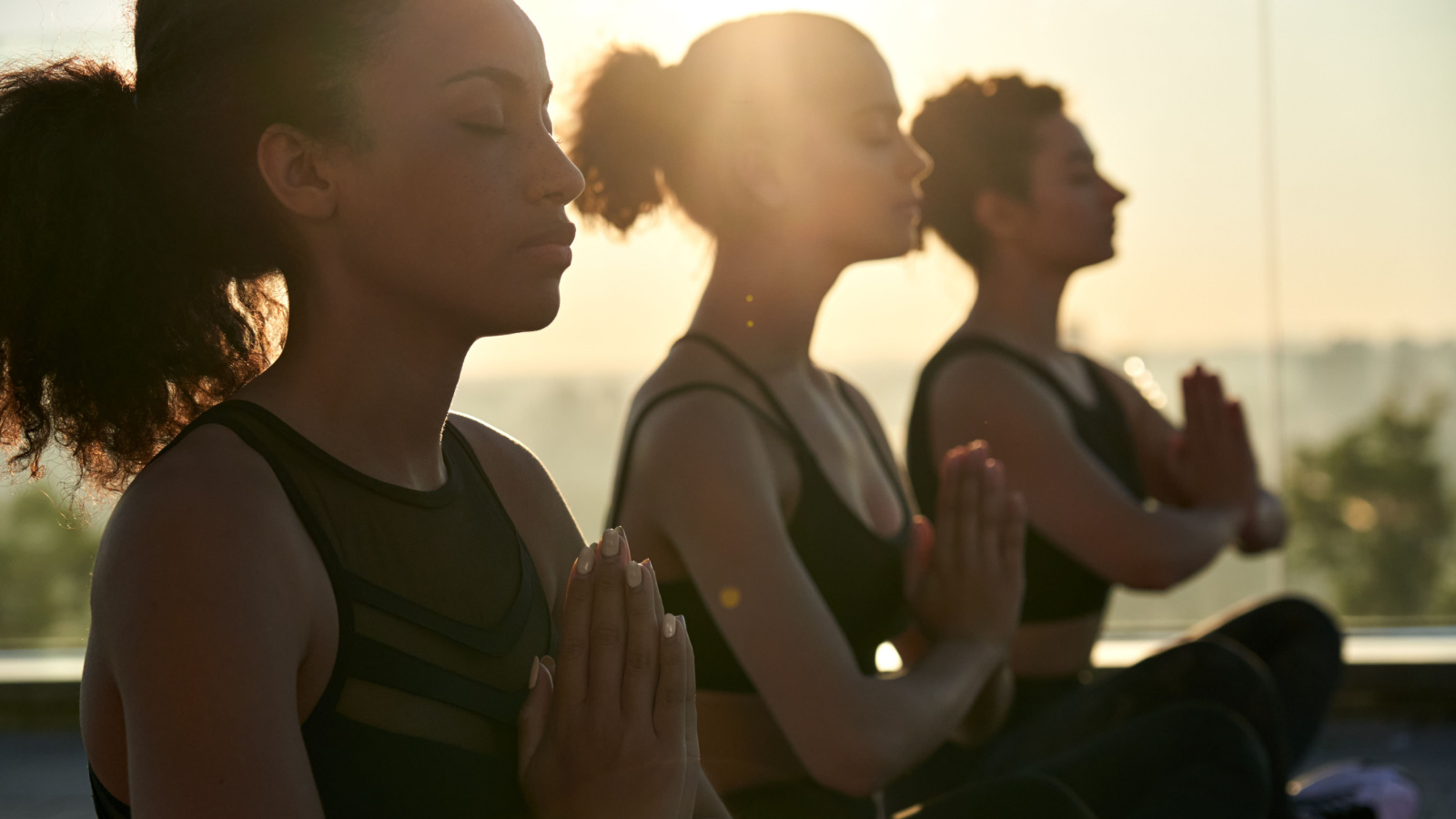
Join a Community
Practicing yoga with others can be incredibly rewarding. Look for local classes or online communities where you can share experiences, ask questions, and find support. Being part of a yoga community can provide a sense of belonging and motivation, helping you to stay committed to your practice.

Listen to Your Body
One of the most important aspects of yoga is learning to listen to your body. Adjust your position or try a different pose if a pose feels painful or uncomfortable. Recognizing the difference between a good stretch and pain is crucial to practicing yoga safely and effectively.
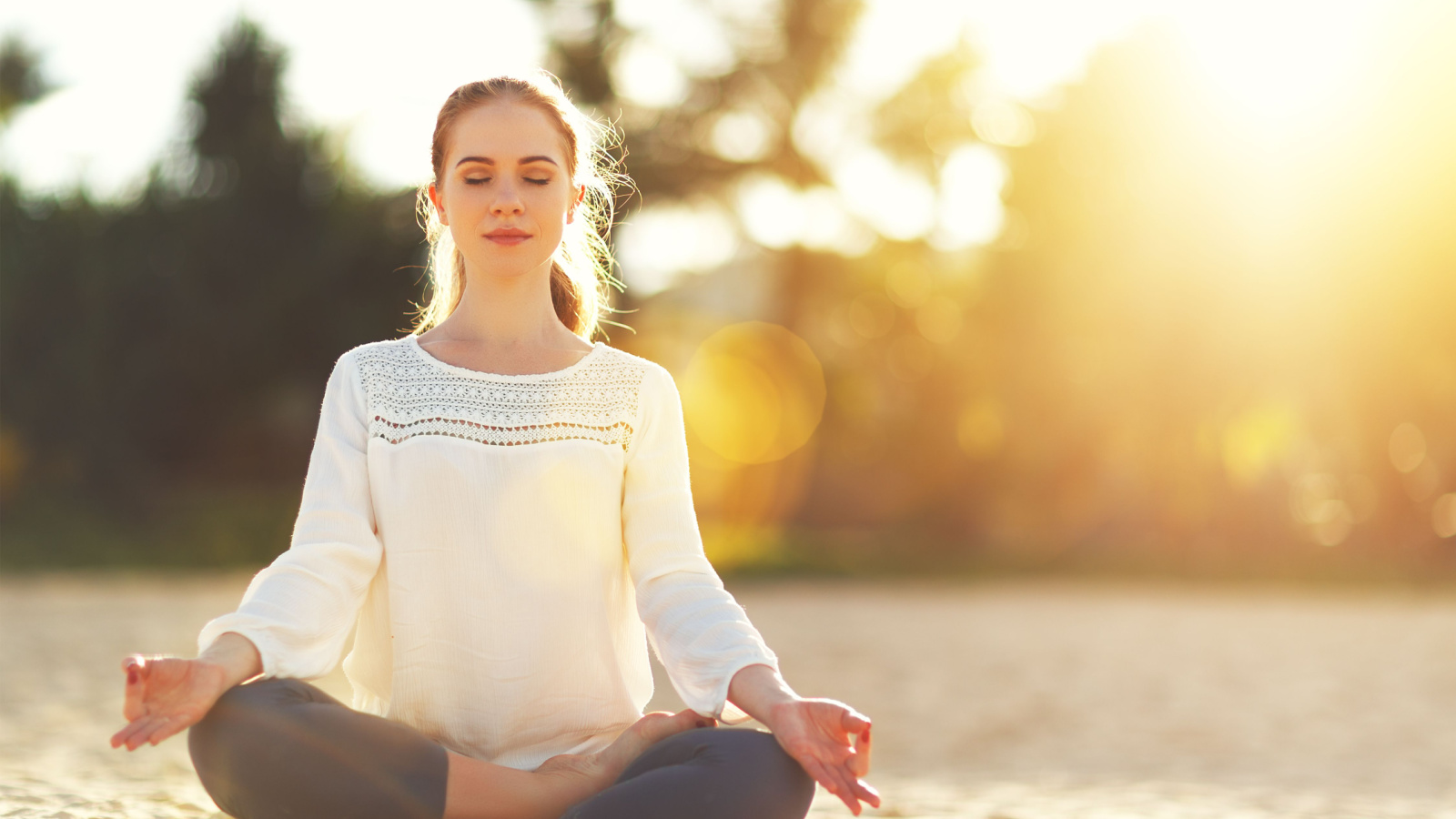
Experiment with Different Styles
Yoga comes in many styles, from the gentle flows of Hatha to the intense heat of Bikram. Experimenting with different styles can help you find the one that best suits your needs and preferences. Each style offers unique benefits and challenges, making your yoga journey diverse and exciting.
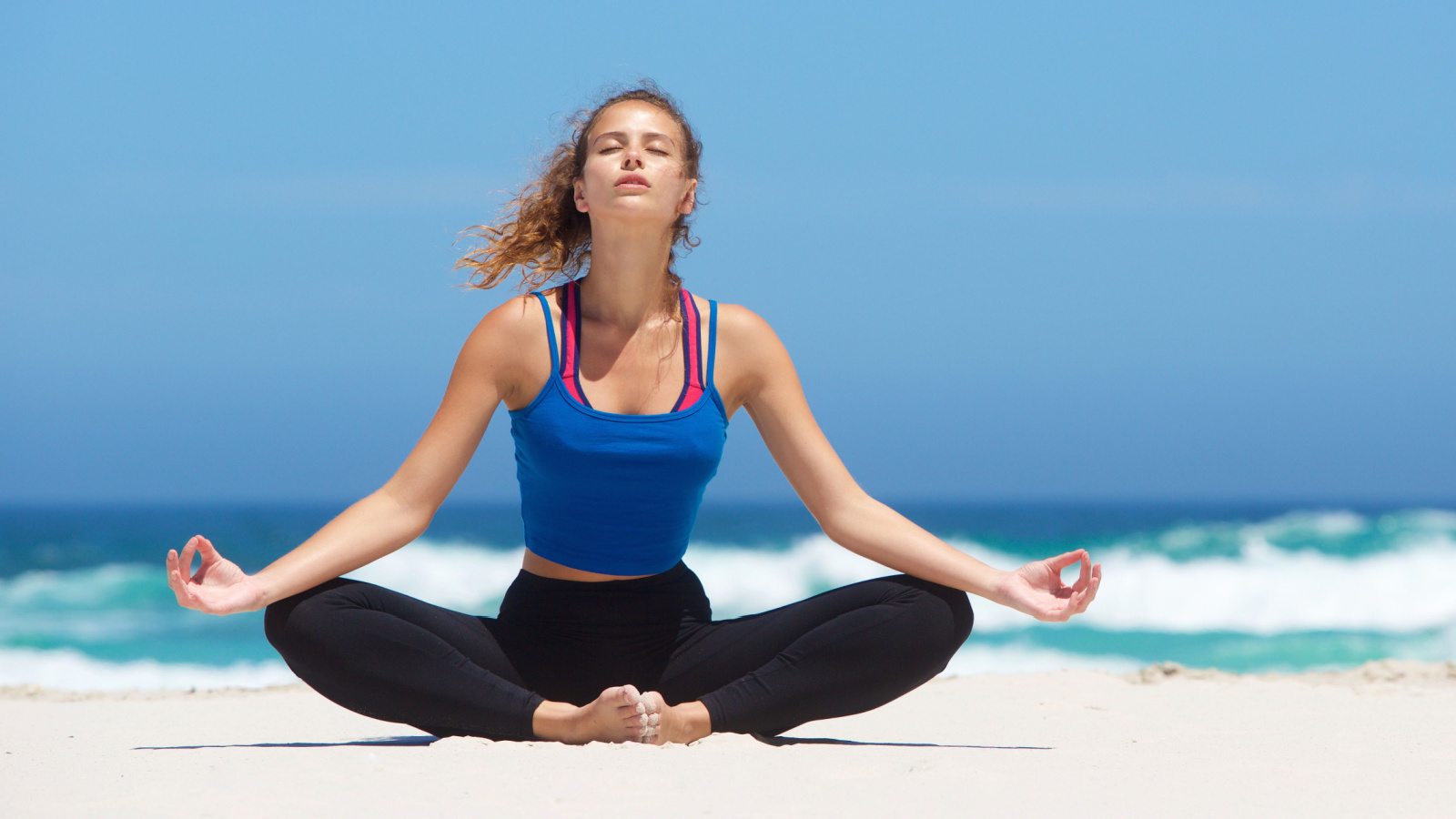
Incorporate Meditation and Relaxation Techniques
Yoga is about calming the mind and finding inner peace. Incorporate meditation and relaxation techniques into your practice, such as guided imagery or deep relaxation exercises. These practices can enhance the benefits of yoga, reducing stress and improving mental clarity.


Seek Guidance When Needed
If you’re unsure about a pose or aspect of your practice, don’t hesitate to seek guidance from a qualified yoga instructor. They can provide personalized advice and adjustments to help you improve. Remember, there’s no shame in asking for help; it’s a sign of commitment to your practice and personal growth.
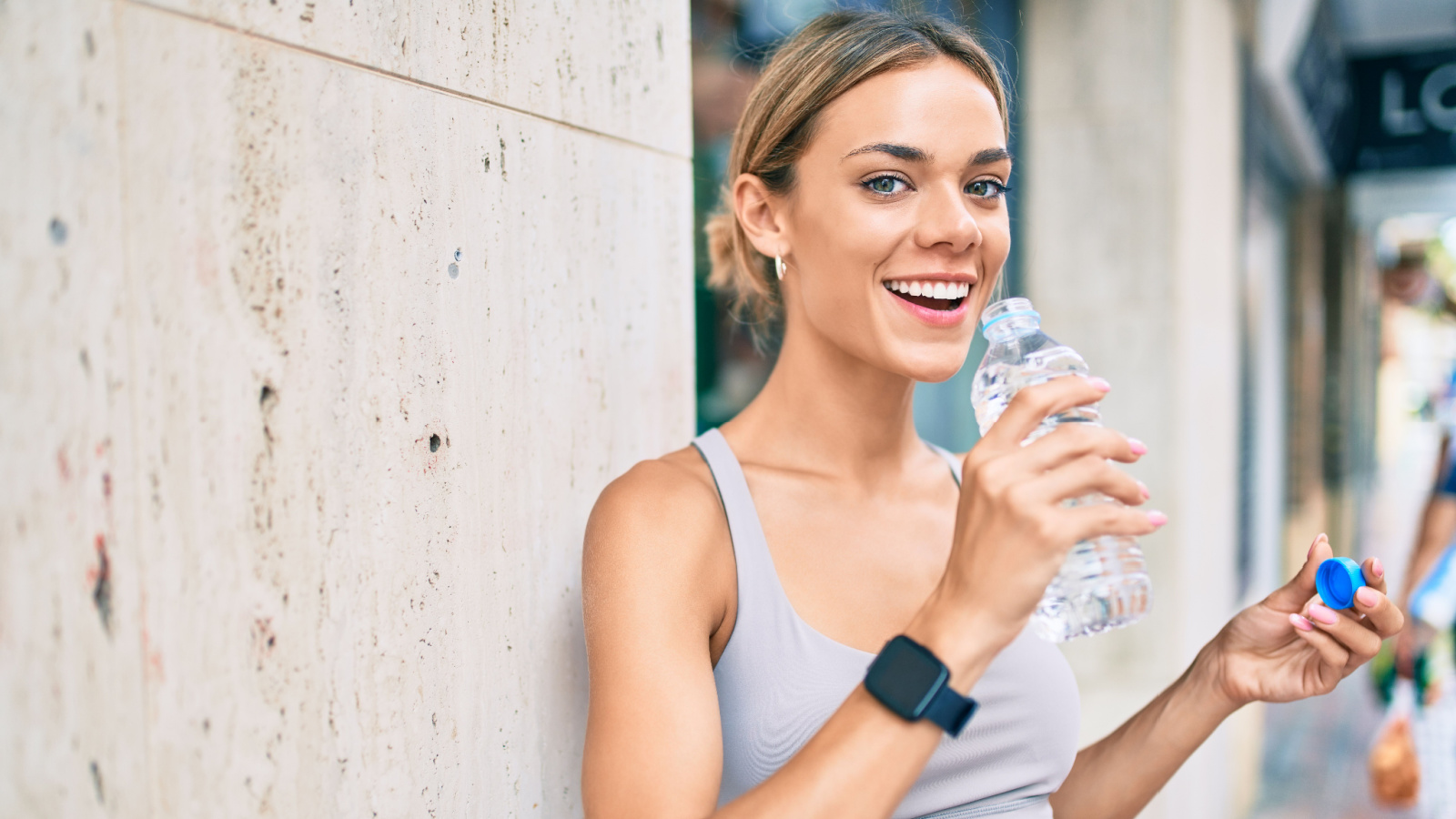
Reflect on Your Journey
Take time regularly to reflect on your yoga journey. Acknowledge the progress you’ve made, the challenges you’ve overcome, and the lessons you’ve learned. This reflection can be a powerful source of motivation and a reminder of how far you’ve come.
More for You
US Ally Scrambles Jets To Intercept Chinese Spy Drone
Harvard psychologist: If you say 'yes' to any of these 9 questions, you're 'more emotionally secure than most'
‘Harlem' Renewed For Season 3 At Prime Video; New Cast Revealed
West Virginia Gov. Justice vetoes bill that would have loosened school vaccine policies
This trans man transitioned, detransitioned then transitioned again. What he wants you to know.
Buffalo Nickels Could Be Worth Thousands — How To Spot One
Major scam of Russian MoD: Media uncover real characteristics of Zircon missile
16 Compliments You Didn’t Realize Are Actually Pretty Insulting
‘The Night Agent' Season 2 Adds Three Guest Stars
Emirates And Ethiopian Airlines Collision At 37,000ft Averted By Somaliland ATC
Supreme Court Gets Jan 6. Defendant Out of Jail
Baltimore port bridge collapse: Global ocean carriers put U.S. companies on hook for urgent cargo pickup
Vanderbilt University students flood an administrative building protesting the university's removal of an anti-Israel, Boycott, Divestment and Sanctions initiative
50 Hidden Gems from Every State
‘American Fiction' Star Erika Alexander Lands Series Regular Role In Apple's ‘Invasion' For Season 3
Utah women’s basketball team ‘troubled and shaken’ as ‘disturbing’ details of alleged racist abuse directed at players emerge
Exclusive—Iraq Militia Warns US Troops Will Exit 'in Coffins' If Biden Won't Withdraw
A psychology expert shares 5 toxic phrases 'highly selfish, entitled' people always use—and how to deal with them
Montana Supreme Court strikes down voting restrictions
25 facts you may not know about the Civil War

A Journey Through the 8 Chakras with Kundalini Yoga

- July 2, 2021
This article will take us through each of the eight chakras, offering a brief explanation with a Kundalini Yoga kriya and meditation to help bring each of these energy centers back into balance.
What are Chakras?
Chakras are energy centers that exist within the human body. These energy centers are mapped to different emotional and psychological issues and can be used to help identify imbalances and to establish internal harmony.
The combined effect of our chakra systems become who we are, how we feel, how we behave, and how we change.
In simple terms, the word “chakra” is a Sanskrit word meaning wheel or circle. These whirlpools of energy are mapped along the spine. In most forms of yoga, there are seven recognized chakras. These are:
- 1st Chakra: Root Chakra
- 2nd Chakra: Sex Organs
- 3rd Chakra: Navel Point
- 4th Chakra: Heart Center
- 5th Chakra: Throat Center
- 6th Chakra: Third Eye Point
- 7th Chakra: Crown Chakra
In Kundalini Yoga, an eighth chakra, the Electromagnetic Field, is recognized.
The First Chakra/The Root Chakra (Muladhara)
Muladhara means “root, support.”
The first chakra is about survival, support, and feeling grounded and safe in our environment. It relates to our ability to focus, project, and manifest worldly, practical needs. When the first chakra is balanced, it manifests as a feeling of security.
When the first chakra is out of balance or blocked, it results in feelings of instability, insecurity, grief, and depression. There can be themes of self-centeredness and self-indulgence as the ego works hard to get its needs met. In extreme imbalance, this can look like a very self-serving person.
- Color: Red.
- Location: at the base of the spinal column, the perineum, midway between the anus and the genitals.
- Focus: Τhe first chakra is centered around issues of survival, including taking care of the health of our physical body and managing our day-to-day needs.
First chakra questions:
- Do you take care of your physical body? Do you exercise? When was the last time you had a physical examination or went for routine dental care? Are you at your optimal weight?
- Do you actively seek information about your diet? Do you eat a healthy, well-balanced diet free from processed food?
- Do you enjoy your work? Do you experience fulfillment or frustration in your job?
- Do you budget, save money, and actively manage your financial situation?
- Do you feel secure in your environment or are you usually anxious (about resources including time, money, energy)?
Kundalini Yoga Classes for the First Chakra:
- Full class (54 minutes)
- Kriya only (17 minutes)
- Meditation only (5 minutes)
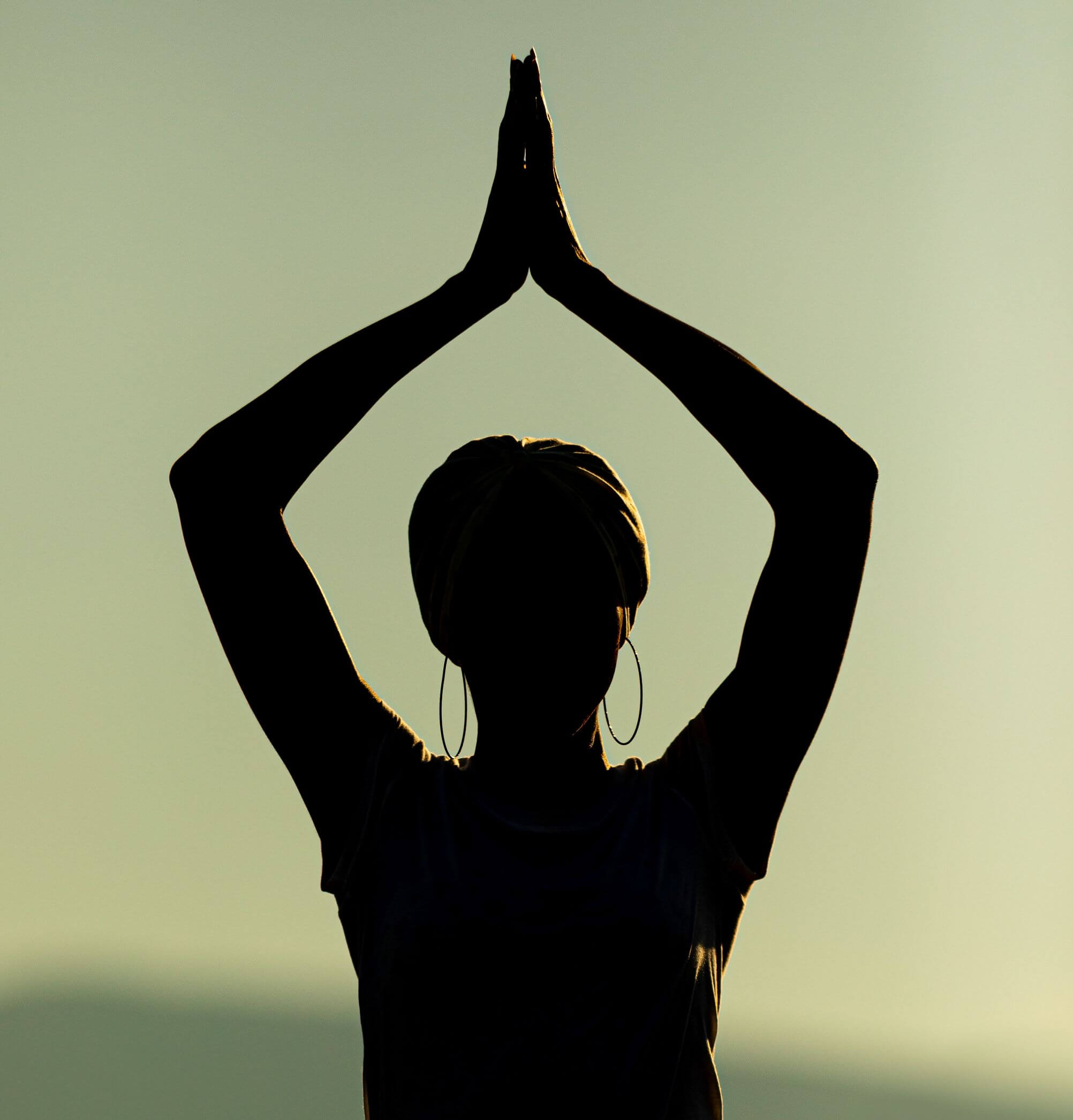
The Second Chakra/The Sex Organs (Svadhisthana)
Svadhisthana means “sweetness.”
The second chakra is about sexuality, creativity, inspiration, and energy storage. This is the chakra of polarities (opposites), and these polarities create movement. Pleasure is one of the essential features of the second chakra, and the second chakra is where we gain a degree of freedom and complexity. When in balance, this chakra manifests as the ability to experience pleasure, creativity, and inspiration in an open, yet tempered way.
When the second chakra is out of balance, you may have a hard time experiencing pleasure, expressing yourself, and relaxing. Pleasure is a double-edged sword and being out of balance in this chakra can manifest as avoiding pleasure or indulging in it too much. Imbalances can result in frustration, attachment, anxiety, fear, or overindulgence, and excessive hedonism.
- Color: Orange.
- Location: midway between the pubic and the navel. It includes the lower abdomen, genitals, and womb.
- Focus: The second chakra is about sexuality, inspiration, pleasure, and creativity.
Second Chakra Questions:
- Are you able to express your emotions in acceptable ways at the right time?
- Are you flexible: physically, emotionally, and mentally?
- Are you able to let go of a feeling? Do you repress your feelings?
- Are you able to nurture others? Are you able to accept nurturing?
- Are you able to relax and seek pleasure? Do you allow time for play and relaxing? Are you comfortable doing nothing?
Kundalini Yoga for the Second Chakra:
- Full class (47 minutes)
- Kriya only (31 minutes)
- Meditation only (7 minutes)
The Third Chakra/The Navel Point (Manipura)
Manipura means “lustrous gem.”
The third chakra is about personal power, a strong will, self-motivation, the ability to make decisions, and the ability to inspire other people. When in balance, this manifests as the ability to confidently pursue your goals, to project powerfully into a situation, and your personal grit to keep going in difficult circumstances.
When the third chakra is out of balance, you may lack initiative, and you may not pursue your goals. You may feel victimized by life circumstances and have feelings of powerlessness.
- Color: Yellow.
- Location: between the base of the sternum and the navel.
- Focus: The purpose of the third chakra is transformation. In the third chakra, we overcome inertia. This is the center of action, will, and vitality.
Third Chakra Questions:
- Do you have willpower?
- Are you able to set goals and achieve them?
- Do you know how to maintain personal energy levels?
- Do you feel self-confident?
- Do you inspire others to see their personal best and potential?
Kundalini Yoga for the Third Chakra:
- Full 56-minute class for the third chakra.
- 14-minute kriya only for the third chakra.
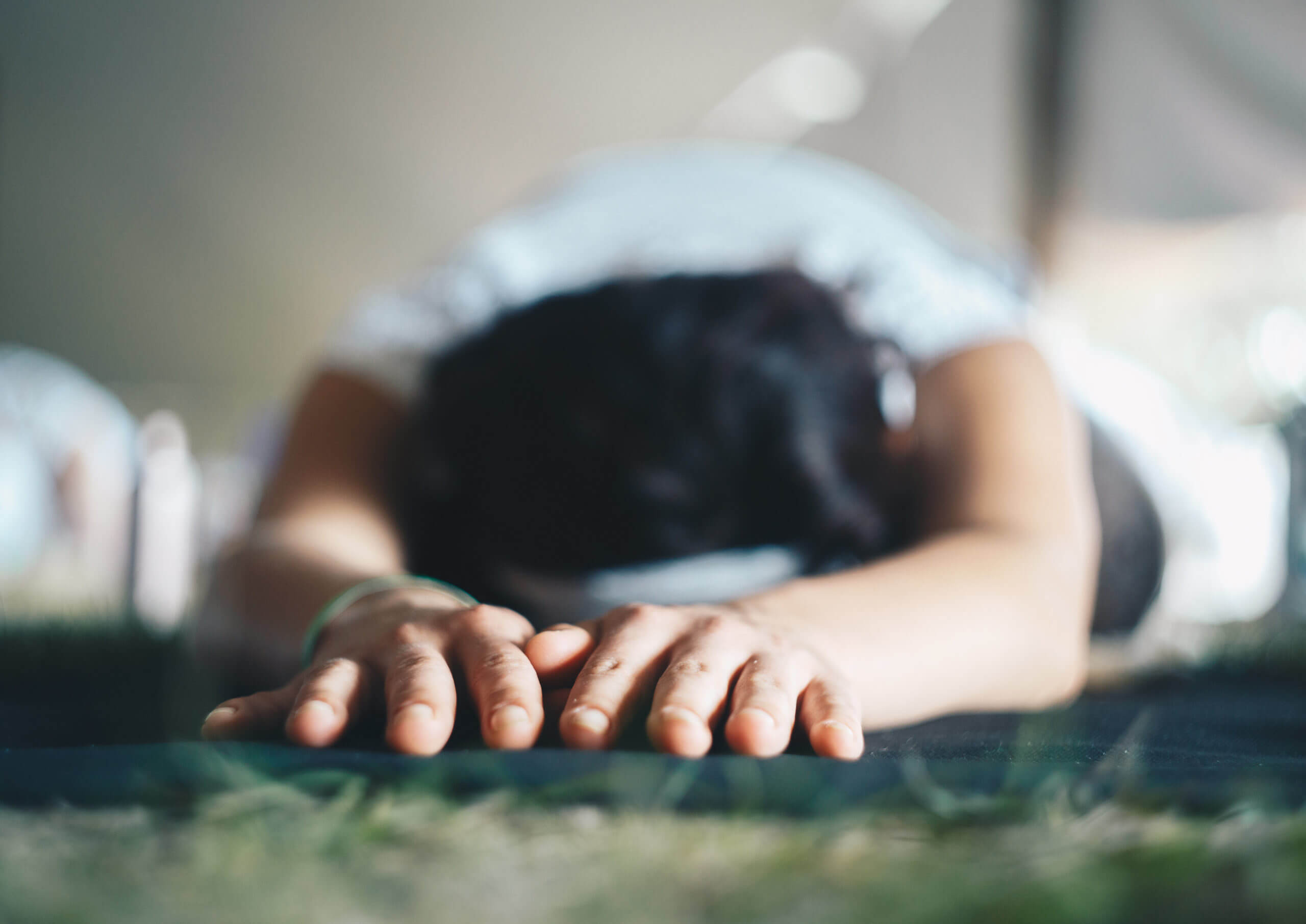
The Fourth Chakra: The Heart Center (Anahata)
Anahata means “unstruck” (as in the sound made without two things striking).
The fourth chakra is about love and the infinite patterns of interdependence between all things. When the heart chakra is open and balanced, we perceive the world as unity, not separation. When in balance, you can easily and consistently access compassion, accept others in a non-judgemental way, and feel joy, happiness, and bliss.
When the fourth chakra is out of balance, you cannot access compassion. You may be afraid to give or you give to those who don’t deserve it and share with those who don’t want it. You may be blocked from feelings of joy and happiness, and you may feel isolated.
- Color: Green.
- Location: at the heart center of the body.
- Focus: This chakra is about love, compassion, acceptance, fulfillment. In the fourth chakra, we feel connected to others and are able to give and receive love.
Fourth Chakra Questions:
- Do you feel happy? When and how often are you happy?
- Do you have friends? Are you able to maintain long-term friendships? Do you make friends easily?
- Are you able to love and accept yourself? Are you able to experience compassion?
- Do you feel part of the world around you? Do you see the world as “we are one” or “us against them?”
- Are you able to give and share?
Kundalini Yoga for the Fourth Chakra
The Fifth Chakra: The Throat Chakra (Visuddha)
Visuddha means “purification.”
The fifth chakra is about sound, communication, creativity, connection, expression, and interactions. When the fifth chakra is open and balanced, we communicate our truth clearly and compassionately. We can both speak effectively and listen actively. Purification is an aspect of this chakra.
When the fifth chakra is out of balance, communication is ineffective. This may manifest as a lack of expression or as bitterness. You may have something you want to say but you have difficulty speaking or communicating in a way others can hear. It may be difficult to say your truth.
- Color: Blue.
- Location: the throat.
- Focus: Sound, effective communication including speaking, listening, writing, chanting, telepathy, and any of the arts, particularly those related to sound and language.
Fifth Chakra Questions:
- Are you able to listen to ideas expressed from a point of view that differs from your own without reacting? Are you able to hear what others have to say?
- Do you find opportunities to approach different aspects of your life creatively, such as performing mundane chores in a way that brings beauty and grace to the task?
- Do you like the sound of your voice when you are talking, singing, thinking silently, and meditating?
- When you are with others, do you harmonize with them?
- Can you manifest your ideas?
Kundalini Yoga for the Fifth Chakra.
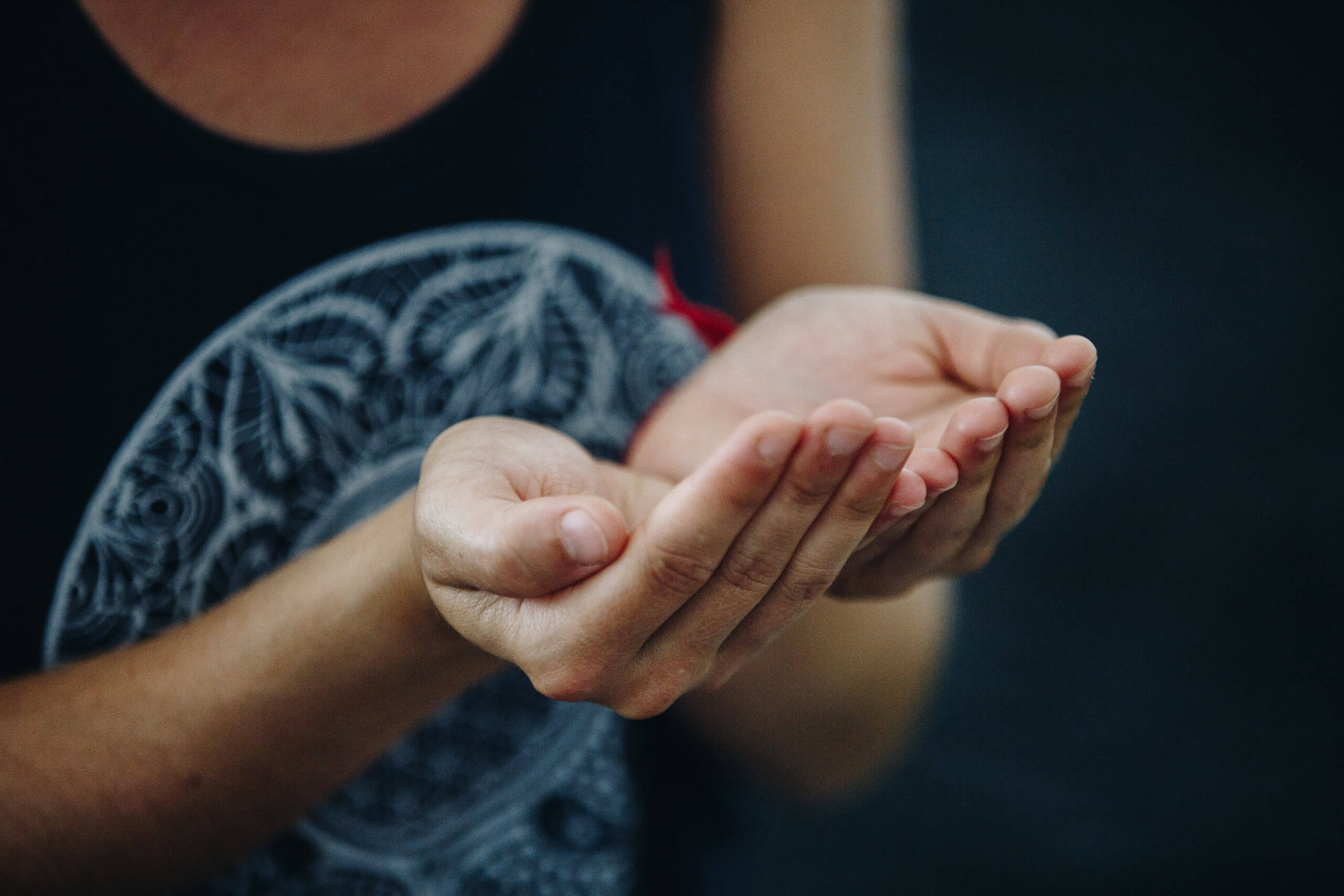
The Sixth Chakra: the Third Eye Point (Ajna)
Ajna means “to perceive.”
The sixth chakra is about intuition, visualization, imagination, perception, and dreaming. The sixth chakra is the center of seeing the unseen and tuning into the subtle undercurrents of a situation. When in balance, your intuition is strong and clear. You can visualize situations and access inner wisdom.
When the sixth chakra is out of balance, you may experience detachment, confused thinking, or ongoing nightmares. You may feel confused and experience a lack of clarity.
- Color: Indigo.
- Location: the third eye point (the brow point at the forehead between the eyes). This chakra is located in the brain.
- Focus: Clear seeing, intuitive understanding, light, and clairvoyance.
Sixth Chakra Questions:
- Can you visualize and imagine things?
- Can you see in imagery and understand things in a non-linear way? When you hear the word “tree” do you see the word tree or a physical tree?
- Have you had psychic experiences, clairvoyance, or unusual coincidences? Are you in touch with your intuition (where you know something clearly without knowing why)?
- Do you have vivid dreams regularly? Have you ever kept a dream journal?
- When you do yoga or meditate, can you visualize energy?
Kundalini Yoga for the sixth chakra
The Seventh Chakra: the Crown Chakra (Sahasrar)
Saharsrar means “thousandfold.”
The seventh chakra is about thoughts, information, and understanding. It represents our conscious and unconscious thought structures and belief systems. The function of this chakra is knowing and when in balance, we take in and understand full information. Knowing is a complex process that requires continual transcendence and shedding of the old. To be in balance, we must constantly discover and assimilate new information.
If the seventh chakra is out of balance, we may become close-minded, rigid in our thinking, depressed, confused, and anxious.
- Color: Violet.
- Location: the top of the head.
- Focus: thought, information, and knowing.
Seventh Chakra Questions:
- Are you able to become aware of your own thoughts, actions, and motivations?
- Are you objective and accepting of your thoughts, actions, motivations, and feelings?
- Do you meditate regularly? Meditation is one of the most effective activities to bring the seventh chakra into balance.
- Are you open to having spiritual experiences?
- Are you able to take in new information?
Kundalini Yoga for the Seventh Chakra
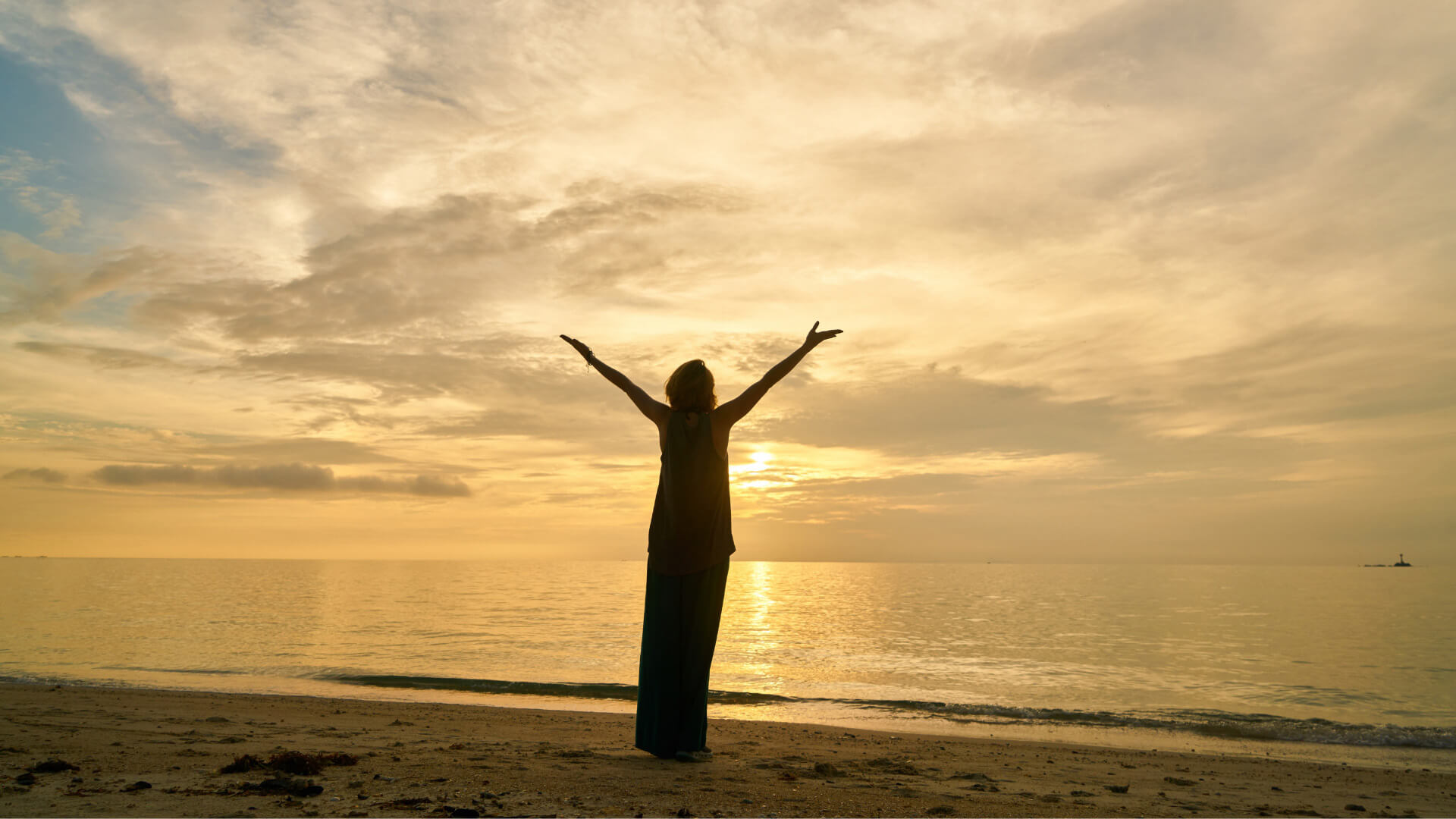
The Eighth Chakra: The Electromagnetic Field
This eighth chakra is a chakra recognized in Kundalini Yoga but generally not in other forms of yoga.
The eighth chakra is about the aura, the energy field that surrounds you, and your subtle body. It is used to filter all vibrations that come into your field. The aura is the center of consciousness, where our exchange of energy takes place with our environment. When in balance, it provides a protective shield against negative energies and helps project radiance. Your aura and electromagnetic field are your first line of energetic defense.
When the eighth chakra is out of balance, you may feel weak, vulnerable, overwhelmed, and unable to protect yourself from negative energies, harm, and disease. You may be particularly sensitive and overwhelmed by negative situations and low vibration energy.
- Color: White.
- Location: The energy field surrounding the body. If your aura is very strong, it can extend up to nine feet from your physical body.
- Focus: Protection and projection. The electromagnetic field influences how you are perceived by others and offers you energetic protection unless lower vibration forces.
Eighth Chakra Questions:
- Do you feel radiant? Do you feel your energy can uplift a room?
- Do you sense you deflect negative energy or does it permeate your field, leaving you feeling overwhelmed and uncomfortable?
- Can you choose to relate to someone or disconnect from their influence?
- Do you feel connected to your higher self?
- Do you feel in touch with your life’s purpose?
Kundalini Yoga for the 8th Chakra
The Journey Never Ends
You’ve now taken a journey through the chakras, but the journey never really ends. Maintaining balance of these energy centers requires conscious work and ongoing maintenance.
A few things you can do to keep your chakras open and in balance include:
- Eating a whole-food based, healthy diet (free from processed ingredients). Check out some great recipes here.
- Maintaining a daily yoga/meditation practice.
- Enjoying a clean, comfortable environment free from excess clutter.
- Surrounding yourself with positive, supportive people who truly care about you and want the best for you.
If you notice you are out of balance in any of the eight chakras, you can begin to restore balance by doing the corresponding Kundalini Yoga kriya and/or meditation for 40 days.
This post is based on the books “ Energy Maps: A Journey Through the Chakras” by Gurudarshan Kaur Khalsa and Meditation as Medicine by Dharma Singh Khalsa.
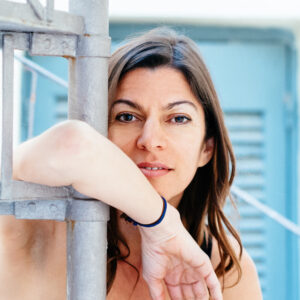
Privacy Overview
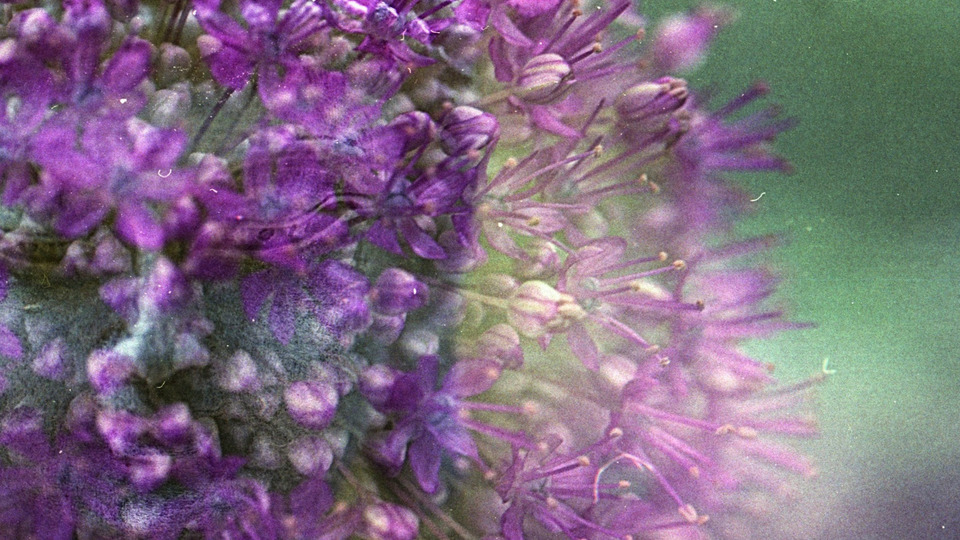
Tuesdays (starting 6/13) 8:30 - 9:45 am
This 75 minute class online class offers an opportunity to open tight areas of the body in order to increase flexibility and mobility. It incorporates gentle stretching using floor based and standing postures as well as simple movement/flow sequences linked to breath. It is designed to move all parts of the body (including the brain) to build strength, flexibility, balance and awareness.
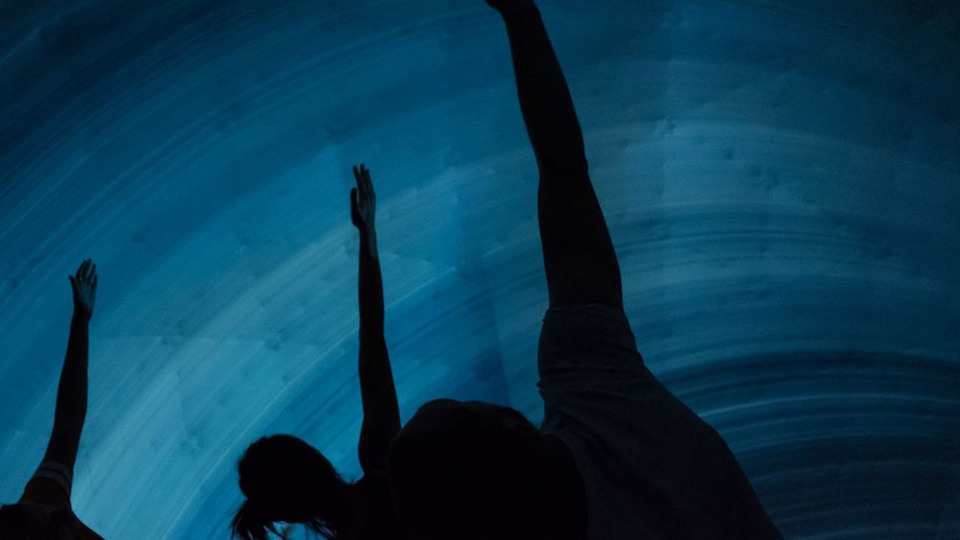
Thursdays 8:30 - 9:30 am
This 60 minute online class is for students who have some experience with yoga and want to bring a little more challenge into their practice. A bit more vigorous, emphasis is on sequences and postures that bring the body deeper into strength through controlled, steady movement and breath.

Thursdays 8:30 - 9:45 am - CANCELED FOR SUMMER 2023 AS OF 6/15
This 75 minute online class combines floor based, standing and balancing postures with an emphasis on a specific area of the body. (e.g. Hips; Chest and Heart; Low Back; Neck & Shoulders; Core Strength; Balance; Upper or Lower Body Strength)
While there is a specific focus to each class, sequences are designed to move the entire body to improve flexibility, strength, balance and focus.

I offer private instruction to accommodate the needs of the individual student. These focused sessions can be beneficial whether you are a beginner who wishes to learn the basics or you are an experienced practitioner looking to refine your practice.
With 25 years of experience working as a licensed physician assistant and attending disease specific advanced yoga trainings I provide specialized and informed instruction to individuals living with medical conditions such as cancer, arthritis and osteoporosis. In addition, I can advise otherwise healthy individuals who wish to adapt their yoga practice to accommodate injury or navigate the natural changes occurring as we age.
Please contact me for more information
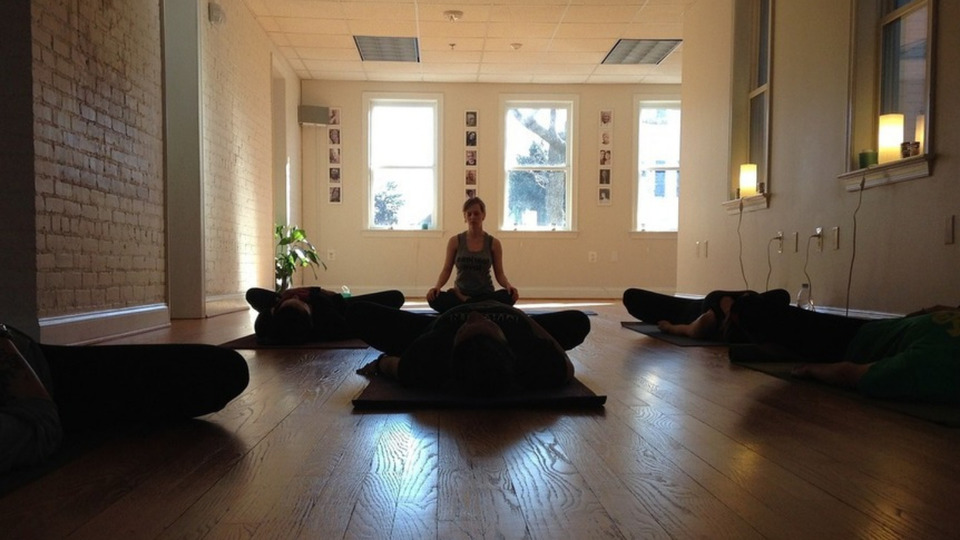
Thursdays 7:00 - 8:15 pm
This 75-minute class is mainly a floor-based practice. The first half of the class engages the body in breathwork, gentle stretching, and movement. The remainder of the class is a series of postures each held for several minutes with the support of bolsters, blankets, and blocks. This allows for a gradual release of physical tension, a letting go of effort, and an invitation to “undo”. There is a short guided body scan meditation making this practice relaxing, balancing and restorative for both the body and mind.
This class focuses on gentle stretching to improve flexibility and mobility in muscles and joints. Core exercises will support a healthy spine that can lead to improved posture. A sequence of standing poses helps build strength in muscles and bones improving balance and resilience. A short rest and body scan meditation are used to bring energetic balance back to both the mind and body. Throughout the practice, we utilize the power of breath to support active movement bringing energy and vitality to the body and to calm and soothe the nervous system to bring ease and well-being during rest and meditation.

© 2024 Journey Through Life Yoga & Wellness

No results found
- Banya and Sauna
- Beauty Salons
{[{item.label}]}
- {[{data.title}]}
Events in Moscow
Filter Events by Sub-Category
- This Weekend
Please select a Date first.

Best Gym in Moscow
Local recommendations from our my guide moscow team.
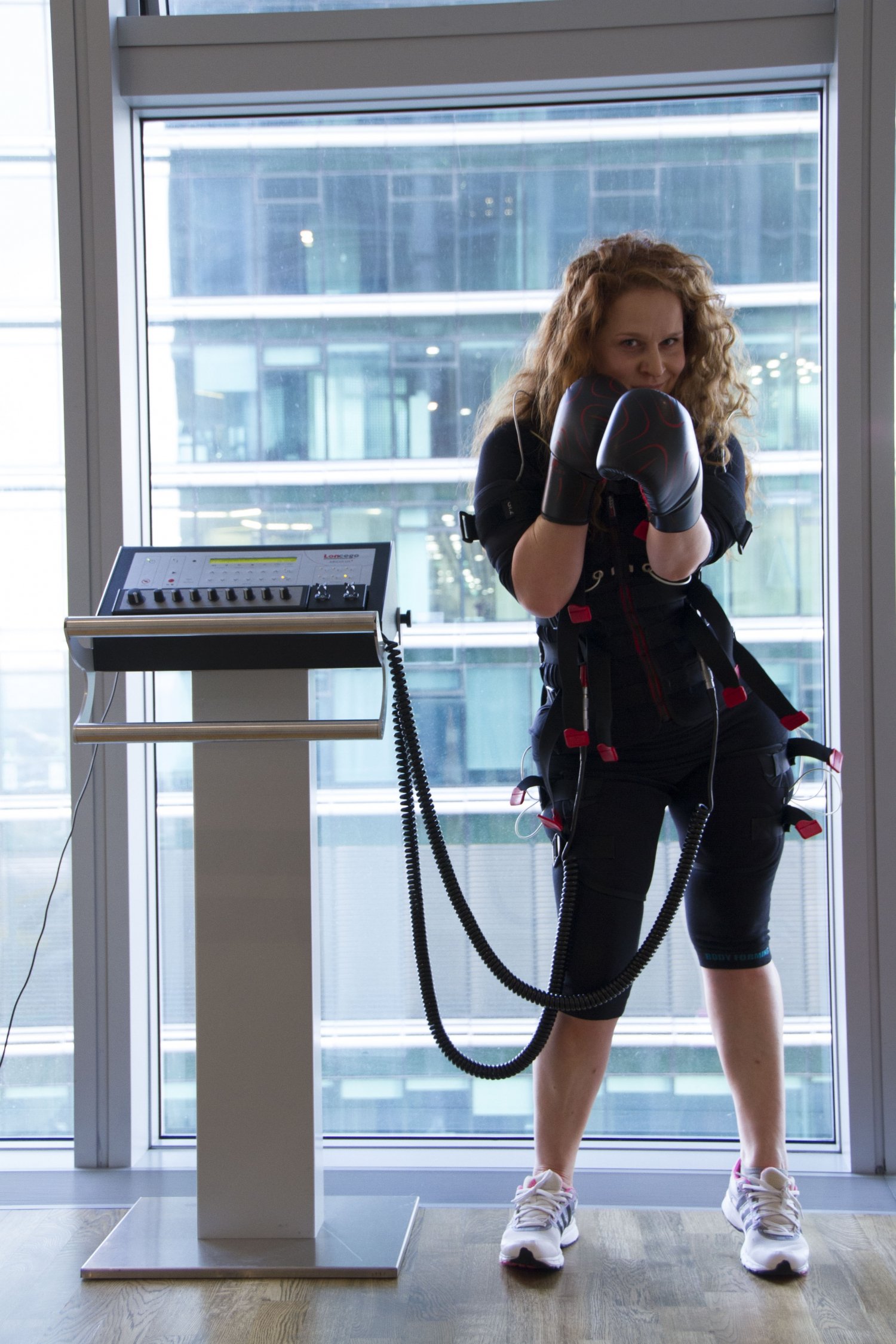
BODY FORMING
The EMS-centers “BODY FORMING” have been created for the purpose of health improvement and body modelling. Today “Body Forming” presents a chain of centers in Mos

Empire Swim Academy
At Empire Swim Academy we provide expatriates and residents of City of Moscow, Russia with the best quality swim programs that develop the physical, athletic and personal

The international chain of fitness centers World Gym takes a special place among leaders of fitness industry in the USA and all over the world. For over 40 years of histo

X-Fit is a chain of more than 50 modern, highly-equipped and comfortable fitness centers of premium and business class spread all over the country. One of the basic rul

Planeta Fitness
Planeta Fitness was founded in 1997 in Moscow and gained much popularity in Russia opening its centers in Saint Petersburg, Samara, Kazan and other cities. Planeta is the
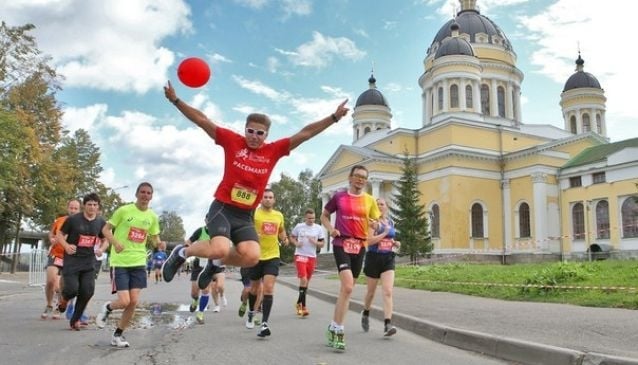
The Golden Ring Run
The Golden Ring Run is a unique project which will take place in the historical cities of the Golden Ring in Russia. The project first started in 2014 in Yaroslavl with t

Viki Land Family club
No one can argue that Moscow is a booming metropolitan city where people can find the widest range of activities for themselves and their children..........

For more than 14 years Dr.LODER has been providing premium services at fitness market counting over 15 000 clients in Moscow. The history of this fitness center dates b
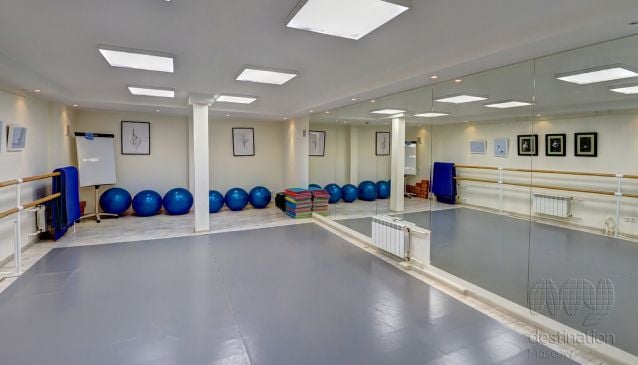
Clover Yoga & Dance Studio
Yoga and Dance Studio "Clover" opened its doors in one of the most beautiful places in the center of Moscow, in December 2014. From its very beginning the studio has beco

World Class
With World Class you will always find a form of exercise that works for you: everything from energetic and effective classes to calm and harmonic relaxation. Discover how

Orange Fitness
Orange Fitness is a leading European and Russian fitness operator with 34 opened clubs, fitness school, and modern technologies of providing premium services. Large poo
Create New Guide
Mini guides.
Login to create your guides for Moscow.
Add to My Guide
- Add to New Guide
Recommended Experiences in Moscow

Massada and the Dead Sea in Russian
Massada and the Dead Sea – A journey to the lowest place in the world.

T-55 Tank Driving Heavy Metal Experience
You'll have the opportunity to drive a T-55 tank under the guidance of a professional instructor who will provide you with expert instruction and safety briefings before you get behind the controls.

T-72 Tank Driving Heavy Metal Experience
You'll have the opportunity to drive a T-72 tank under the guidance of a professional instructor who will provide you with expert instruction and safety briefings before you get behind the controls.
Search, Compare, and Save up to 70%!
Local car rental comparison with my guide, free cancellation.
No need to worry if your plans change with free cancellation options available
24/7 Customer Service
All of our providers offer 24/7 support
500+ trusted car hire partners globally
Create & share your own guide to moscow with friends and family.
Add your recommended places to visit by browsing the website and pressing the icon.
Create your own guide of favourite 'must see' places
Earn your Local Expert badge by Sharing your guides with others
Get your guide seen by submitting it to the Mini Guides section
Must See Places For First Timers
Handpicked by a Local Expert
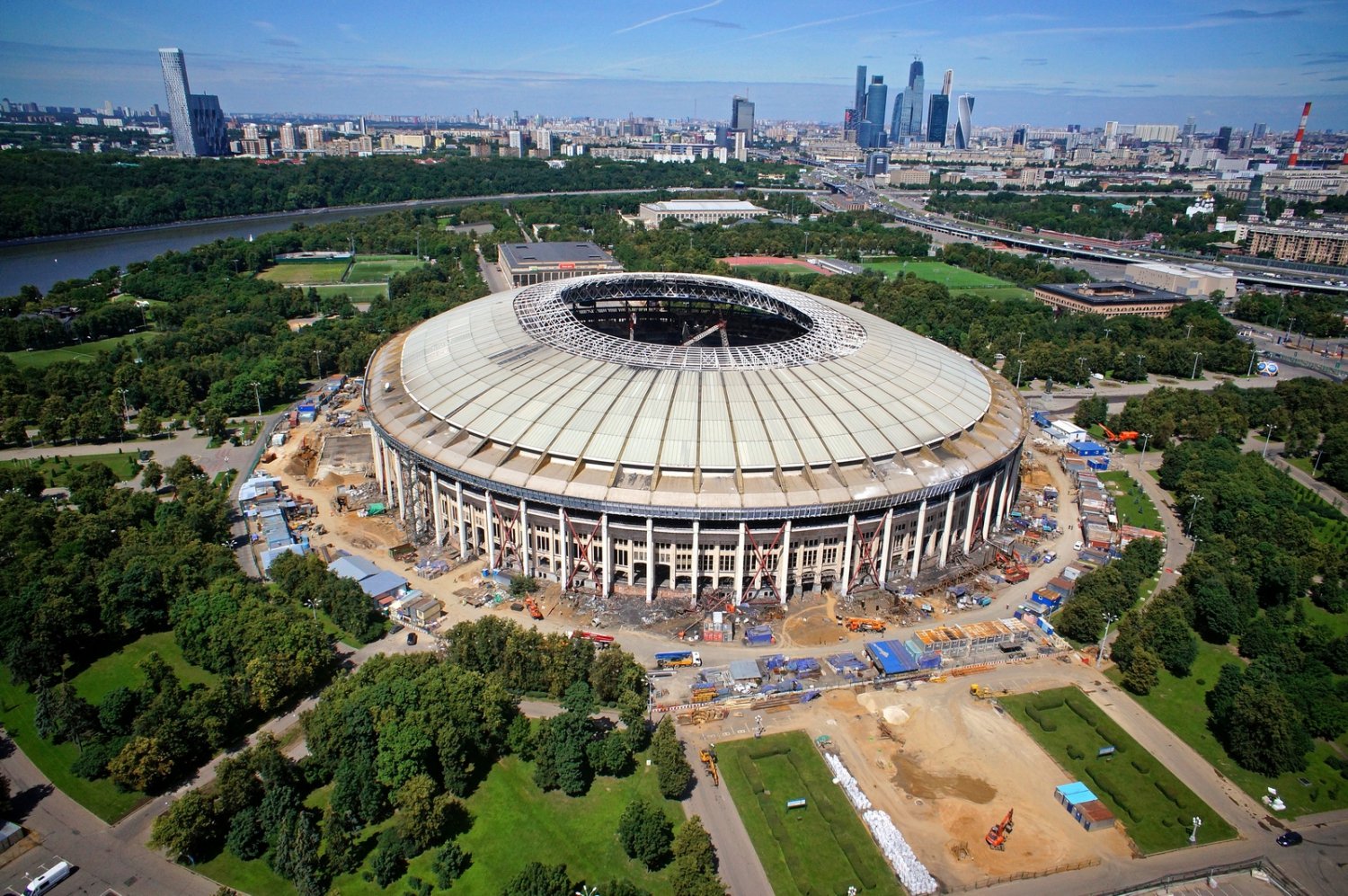
Places to watch the FIFA World Cup 2018
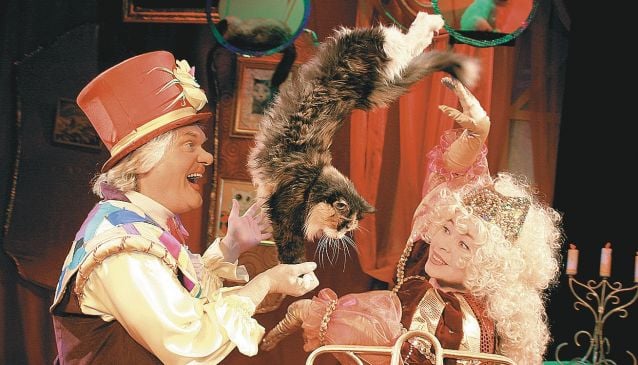
Best For Kids

We Are Part of the My Guide Network!
My Guide Moscow is part of the global My Guide Network of Online & Mobile travel guides.
We are now in 120+ Destinations and Growing. If you are interested in becoming a local travel partner and would like to find out more then click for more info about our Website Business Opportunity .
Nearby Destinations
- My Guide St Petersburg
- My Guide Warsaw
- My Guide Gdansk
- My Guide Stockholm
- My Guide Krakow
- My Guide Slovakia
- My Guide Budapest
- My Guide Copenhagen
- My Guide Berlin

A Journey Through the 8 Chakras with Kundalini Yoga
In this post, we’ll go through each of the eight chakras, offering a brief explanation with a Kundalini Yoga kriya and meditation to help bring each of these energy centers back into balance.
What are Chakras?
Chakras are energy centers that exist within the human body. These energy centers are mapped to different emotional and psychological issues and can be used to help identify imbalances and to establish internal harmony.
The combined effect of our chakra systems become who we are, how we feel, how we behave, and how we change.
In simple terms, the word “chakra” is a Sanskrit word meaning wheel or circle. These whirlpools of energy are mapped along the spine. In most forms of yoga, there are seven recognized chakras. These are:
- 1st Chakra: Root Chakra
- 2nd Chakra: Sex Organs
- 3rd Chakra: Navel Point
- 4th Chakra: Heart Center
- 5th Chakra: Throat Center
- 6th Chakra: Third Eye Point
- 7th Chakra: Crown Chakra
In Kundalini Yoga, an eighth chakra, the Electromagnetic Field, is recognized.

The First Chakra/The Root Chakra (Muladhara)
Muladhara means “root, support.”
The first chakra is about survival, support, and feeling grounded and safe in our environment. It relates to our ability to focus, project, and manifest worldly, practical needs. When the first chakra is balanced, it manifests as a feeling of security.
When the first chakra is out of balance or blocked, it results in feelings of instability, insecurity, grief, and depression. There can be themes of self-centeredness and self-indulgence as the ego works hard to get its needs met. In extreme imbalance, this can look like a very self-serving person.
- Color: Red.
- Location: at the base of the spinal column, the perineum, midway between the anus and the genitals.
- Focus: Τhe first chakra is centered around issues of survival, including taking care of the health of our physical body and managing our day-to-day needs.
First chakra questions:
- Do you take care of your physical body? Do you exercise? When was the last time you had a physical examination or went for routine dental care? Are you at your optimal weight?
- Do you actively seek information about your diet? Do you eat a healthy, well-balanced diet free from processed food?
- Do you enjoy your work? Do you experience fulfillment or frustration in your job?
- Do you budget, save money, and actively manage your financial situation?
- Do you feel secure in your environment or are you usually anxious (about resources including time, money, energy)?
Kundalini Yoga classes for the first chakra:
Take the full class (54 minutes) here.
Kriya only (17 minutes)
Meditation only (5 minutes)

The Second Chakra/The Sex Organs (Svadhisthana)
Svadhisthana means “sweetness.”
The second chakra is about sexuality, creativity, inspiration, and energy storage. This is the chakra of polarities (opposites), and these polarities create movement. Pleasure is one of the essential features of the second chakra, and the second chakra is where we gain a degree of freedom and complexity. When in balance, this chakra manifests as the ability to experience pleasure, creativity, and inspiration in an open, yet tempered way.
When the second chakra is out of balance, you may have a hard time experiencing pleasure, expressing yourself, and relaxing. Pleasure is a double-edged sword and being out of balance in this chakra can manifest as avoiding pleasure or indulging in it too much. Imbalances can result in frustration, attachment, anxiety, fear, or overindulgence, and excessive hedonism.
- Color: Orange.
- Location: midway between the pubic and the navel. It includes the lower abdomen, genitals and womb.
- Focus: The second chakra is about sexuality, inspiration, pleasure, and creativity.
Second chakra questions:
- Are you able to express your emotions in acceptable ways at the right time?
- Are you flexible: physically, emotionally, and mentally?
- Are you able to let go of a feeling? Do you repress your feelings?
- Are you able to nurture others? Are you able to accept nurturing?
- Are you able to relax and seek pleasure? Do you allow time for play and relaxing? Are you comfortable doing nothing?
Kundalini Yoga for the second chakra:
Take the full class (47 minutes) here.
Kriya only (31 minutes)
Meditation only (7 minutes)

The Third Chakra/The Navel Point (Manipura)
Manipura means “lustrous gem.”
The third chakra is about personal power, a strong will, self-motivation, the ability to make decisions, and the ability to inspire other people. When in balance, this manifests as the ability to confidently pursue your goals, to project powerfully into a situation, and your personal grit to keep going in difficult circumstances.
When the third chakra is out of balance, you may lack initiative, and you may not pursue your goals. You may feel victimized by life circumstances and have feelings of powerlessness.
- Color: Yellow.
- Location: between the base of the sternum and the navel.
- Focus: The purpose of the third chakra is transformation. In the third chakra, we overcome inertia. This is the center of action, will, and vitality.
Third chakra questions:
- Do you have willpower?
- Are you able to set goals and achieve them?
- Do you know how to maintain personal energy levels?
- Do you feel self-confident?
- Do you inspire others to see their personal best and potential?
Kundalini Yoga for the third chakra:
Take the full 56-minute class here.
Kriya only (14 minutes)

The Fourth Chakra: The Heart Center (Anahata)
Anahata means “unstruck” (as in the sound made without two things striking).
The fourth chakra is about love and the infinite patterns of interdependence between all things. When the heart chakra is open and balanced, we perceive the world as unity, not separation. When in balance, you can easily and consistently access compassion, accept others in a non-judgemental way, and feel joy, happiness, and bliss.
When the fourth chakra is out of balance, you cannot access compassion. You may be afraid to give or you give to those who don’t deserve it and share with those who don’t want it. You may be blocked from feelings of joy and happiness, and you may feel isolated.
- Color: Green.
- Location: at the heart center of the body.
- Focus: This chakra is about love, compassion, acceptance, fulfillment. In the fourth chakra, we feel connected to others and are able to give and receive love.
Fourth chakra questions:
- Do you feel happy? When and how often are you happy?
- Do you have friends? Are you able to maintain long-term friendships? Do you make friends easily?
- Are you able to love and accept yourself? Are you able to experience compassion?
- Do you feel part of the world around you? Do you see the world as “we are one” or “us against them?”
- Are you able to give and share?
Kundalini Yoga for the fourth chakra:
Take the full 32 minute class here.

The Fifth Chakra: The Throat Chakra (Visuddha)
Visuddha means “purification.”
The fifth chakra is about sound, communication, creativity, connection, expression, and interactions. When the fifth chakra is open and balanced, we communicate our truth clearly and compassionately. We can both speak effectively and listen actively. Purification is an aspect of this chakra.
When the fifth chakra is out of balance, communication is ineffective. This may manifest as a lack of expression or as bitterness. You may have something you want to say but you have difficulty speaking or communicating in a way others can hear. It may be difficult to say your truth.
- Color: Blue.
- Location: the throat.
- Focus: Sound, effective communication including speaking, listening, writing, chanting, telepathy, and any of the arts, particularly those related to sound and language.
Fifth chakra questions:
- Are you able to listen to ideas expressed from a point of view that differs from your own without reacting? Are you able to hear what others have to say?
- Do you find opportunities to approach different aspects of your life creatively, such as performing mundane chores in a way that brings beauty and grace to the task?
- Do you like the sound of your voice when you are talking, singing, thinking silently, and meditating?
- When you are with others, do you harmonize with them?
- Can you manifest your ideas?
Kundalini Yoga for the fifth chakra.
Take the full 55 minute class here.

The Sixth Chakra: the Third Eye Point (Ajna)
Ajna means “to perceive.”
The sixth chakra is about intuition, visualization, imagination, perception, and dreaming. The sixth chakra is the center of seeing the unseen and tuning into the subtle undercurrents of a situation. When in balance, your intuition is strong and clear. You can visualize situations and access inner wisdom.
When the sixth chakra is out of balance, you may experience detachment, confused thinking, or ongoing nightmares. You may feel confused and experience a lack of clarity.
- Color: Indigo.
- Location: the third eye point (the brow point at the forehead between the eyes). This chakra is located in the brain.
- Focus: Clear seeing, intuitive understanding, light, and clairvoyance.
Sixth chakra questions:
- Can you visualize and imagine things?
- Can you see in imagery and understand things in a non-linear way? When you hear the word “tree” do you see the word tree or a physical tree?
- Have you had psychic experiences, clairvoyance, or unusual coincidences? Are you in touch with your intuition (where you know something clearly without knowing why)?
- Do you have vivid dreams regularly? Have you ever kept a dream journal?
- When you do yoga or meditate, can you visualize energy?
Kundalini Yoga for the sixth chakra.
Take the full 47 minute class here.

The Seventh Chakra: the Crown Chakra (Sahasrar)
Saharsrar means “thousandfold.”
The seventh chakra is about thoughts, information, and understanding. It represents our conscious and unconscious thought structures and belief systems. The function of this chakra is knowing and when in balance, we take in and understand full information. Knowing is a complex process that requires continual transcendence and shedding of the old. To be in balance, we must constantly discover and assimilate new information.
If the seventh chakra is out of balance, we may become close-minded, rigid in our thinking, depressed, confused, and anxious.
- Color: Violet.
- Location: the top of the head.
- Focus: thought, information, and knowing.
Seventh chakra questions:
- Are you able to become aware of your own thoughts, actions, and motivations?
- Are you objective and accepting of your thoughts, actions, motivations, and feelings?
- Do you meditate regularly? Meditation is one of the most effective activities to bring the seventh chakra into balance.
- Are you open to having spiritual experiences?
- Are you able to take in new information?
Kundalini Yoga for the seventh chakra.
Take the full 32 minute class here
The Eighth Chakra: The Electromagnetic Field
This eighth chakra is a chakra recognized in Kundalini Yoga but generally not in other forms of yoga.
The eighth chakra is about the aura, the energy field that surrounds you, and your subtle body. It is used to filter all vibrations that come into your field. The aura is the center of consciousness, where our exchange of energy takes place with our environment. When in balance, it provides a protective shield against negative energies and helps project radiance. Your aura and electromagnetic field are your first line of energetic defense.
When the eighth chakra is out of balance, you may feel weak, vulnerable, overwhelmed, and unable to protect yourself from negative energies, harm, and disease. You may be particularly sensitive and overwhelmed by negative situations and low vibration energy.
- Color: White.
- Location: The energy field surrounding the body. If your aura is very strong, it can extend up to nine feet from your physical body.
- Focus: Protection and projection. The electromagnetic field influences how you are perceived by others and offers you energetic protection unless lower vibration forces.
Eighth chakra questions:
- Do you feel radiant? Do you feel your energy can uplift a room?
- Do you sense you deflect negative energy or does it permeate your field, leaving you feeling overwhelmed and uncomfortable?
- Can you choose to relate to someone or disconnect from their influence?
- Do you feel connected to your higher self?
- Do you feel in touch with your life’s purpose?
Kundalini Yoga for the eighth chakra.
Take the full 56 minute class here.
The Journey Never Ends
You’ve now taken a journey through the chakras, but the journey never really ends. Maintaining balance of these energy centers requires conscious work and ongoing maintenance.
A few things you can do to keep your chakras open and in balance include:
- Eating a whole-food based, healthy diet (free from processed ingredients). Check out some great recipes here.
- Maintaining a daily yoga/meditation practice.
- Enjoying a clean, comfortable environment free from excess clutter.
- Surrounding yourself with positive, supportive people who truly care about you and want the best for you.
- If you notice you are out of balance in any of the eight chakras, you can begin to restore balance by doing the corresponding Kundalini Yoga kriya and/or meditation for 40 days.
This post is based on the books “Energy Maps: A Journey Through the Chakras” by Gurudarshan Kaur Khalsa and Meditation as Medicine by Dharma Singh Khalsa.
Share this:
Download your free ebook “3-minute meditations for each enneagram type".
Get your guide to the 9 Enneagram types with a different Kundalini Yoga meditation for each type. These meditations are designed to relax your habit of attention and build self awareness - starting in as little as 3 minutes a day.

IMAGES
VIDEO
COMMENTS
Yoga nidra and restorative yoga are the two practices that I needed most along my healing journey, and because they were so crucial to my journey, I continue to offer them to others. Last Sunday, I offered a Reiki and Restorative class in person-and everyone in the room dropped into resting so deeply that the stillness in the room was palpable.
Leahna Ennis' journey through yoga exemplifies the remarkable potential for personal growth, healing, and empowerment that this ancient practice offers. From her early exposure to yoga alongside her mother to overcoming life's challenges through its healing power, Leahna's story is a testament to the transformative effects of yoga.
The koshas serve both as a guide for the deeper practices of yoga and as a map for our spiritual journey. The path of yoga is one of progressively moving inward, through each of the koshas, to experience the radiance of the True Self. ... Yoga Class guides you through eight lessons to learn 30 of the most commonly used poses while incorporating ...
My Yoga Journey: Past, Present, Future. One of the main reasons I started this blog was to share my yoga journey. This post is dedicated to just that, my journey with yoga; the past, present, and future. There are not yoga tips and tricks in this post. It's simply a deeper look at how yoga has played a part in my life.
Yoga's Journey Through Time. Originally, yoga was conceptualized in Hindu philosophy as a means for producing spiritual enlightenment. Hindus would utilize rigorous practices focused on controlling their senses and cultivating inner peace for the purpose of self-realization.
Journey Through Yoga. 220 likes · 1 talking about this. Journey Through Yoga provides classes and workshops in yoga and other healing arts and sciences with
Many of the concepts of yoga, meditation and spiritual work can feel a bit "out there" or esoteric. These short books serve to provide direct language and concrete practical examples to help you see benefits of ancient practices in your everyday life. My vision is to create short books (eBooks, audiobooks and paperbacks) that provide…
Journey Through Life Yoga and Wellness offers yoga and mindfulness practices to support your health and well-being as you travel the path through the different phases of your life. Regardless of where your journey started or where you ultimately end up there will inevitably be times of change and transition in both your life circumstances and ...
Let's turn back the clock a few thousand years and journey through yoga's fascinating history, examining how each chapter of its development was shaped by an essential piece of yogic literature and the philosophy of the times. Mythological Origins of Yoga: Lord Shiva and the Saptarishis.
Journey Through Life Yoga and Wellness offers yoga and mindfulness practices to support your health and well-being as you travel the path through the different . Journey Through Life Yoga & Wellness. About Margo; Offerings; Schedule; Blog;
image credit: fizkes/shutterstock . Investing in a good yoga mat is the foundation of your practice. Look for one with sufficient grip and cushioning to support your body through various poses.
During our time together on retreat we'll explore the dream space in many ways. All classes and offerings are here for you throughout the weekend and you're also free to do as you need to, so all are optional. Arrive at Growing Heart Farm on Friday afternoon any time after 2 p.m. Friday 4:30-5 -…
This ancient concept from yogic philosophy offers a roadmap to self-discovery, enabling practitioners to journey beyond physical experience toward blissful consciousness. The koshas, or sheaths, are five distinct layers encompassing our physical body, energy flow, mental processes, wisdom, and bliss. Think of it like peeling back the layers of ...
Healing with the Heart 1-Day Herbal Medicine & Meditation Urban Retreat September 21, 2019 10 am - 6 pm Shambhala Yoga & Dance Center 367 St. Mark's Ave, Brooklyn, NY, 11238 Nee…
In simple terms, the word "chakra" is a Sanskrit word meaning wheel or circle. These whirlpools of energy are mapped along the spine. In most forms of yoga, there are seven recognized chakras. These are: 1st Chakra: Root Chakra. 2nd Chakra: Sex Organs. 3rd Chakra: Navel Point. 4th Chakra: Heart Center.
Thursdays 8:30 - 9:30 am. This 60 minute online class is for students who have some experience with yoga and want to bring a little more challenge into their practice. A bit more vigorous, emphasis is on sequences and postures that bring the body deeper into strength through controlled, steady movement and breath. More Details.
Clover Yoga & Dance Studio. ... Walk through the Soviet Historical Era of Bishkek of Soviet Kyrgyzstan. Explore Soviet architect Buildings, Statues and Touch the mosaics art which were applied in the decades between the 1960s-1980s. ... Massada and the Dead Sea - A journey to the lowest place in the world. €54.59 From. Book Now! T-55 Tank ...
Embark on a captivating journey through the heart of Moscow with our immersive City Walk. ⚠️ Follow for more: https://www.youtube.com/@Real-Russia-4K-Walks F...
Join us on a journey through the rich history of Moscow! From iconic landmarks to hidden gems, we'll show you the best of this vibrant city through its fasci...
In simple terms, the word "chakra" is a Sanskrit word meaning wheel or circle. These whirlpools of energy are mapped along the spine. In most forms of yoga, there are seven recognized chakras. These are: 1st Chakra: Root Chakra. 2nd Chakra: Sex Organs. 3rd Chakra: Navel Point. 4th Chakra: Heart Center.
Immerse yourself in the grandeur of Moscow with this stunning aerial tour in 4K. From the historic Red Square and the glorious Saint Basil's Cathedral to the...